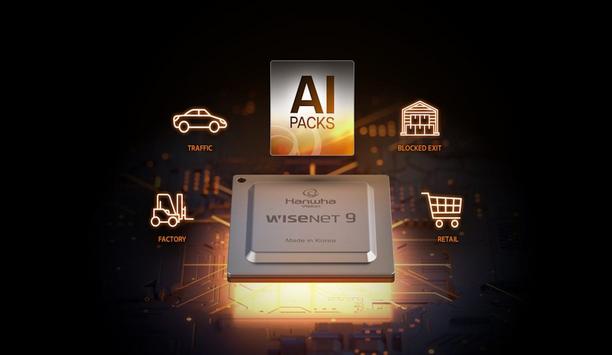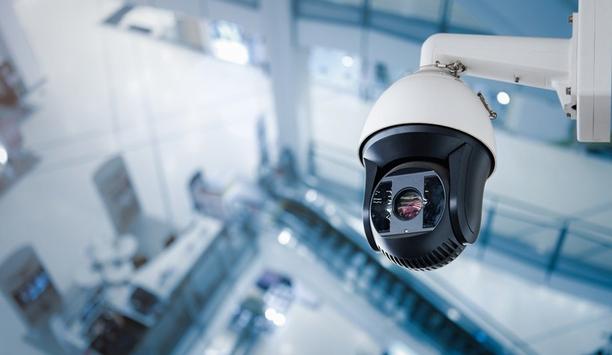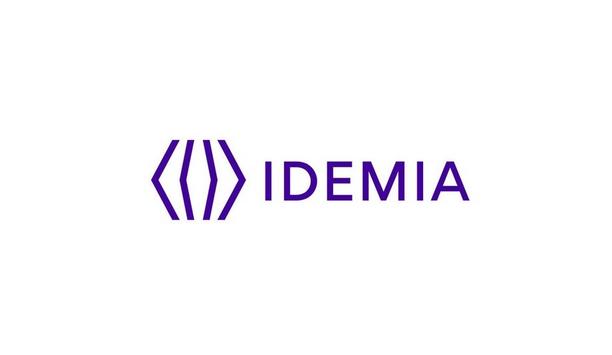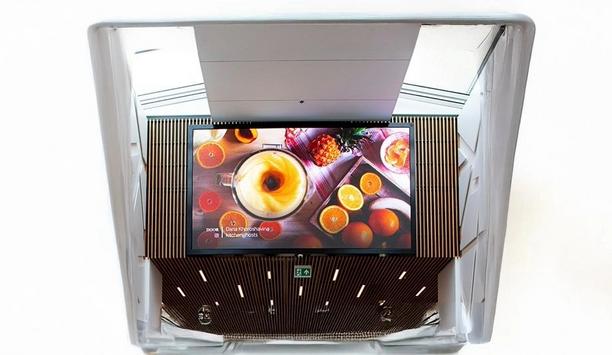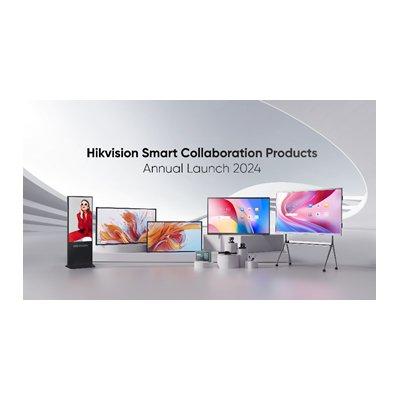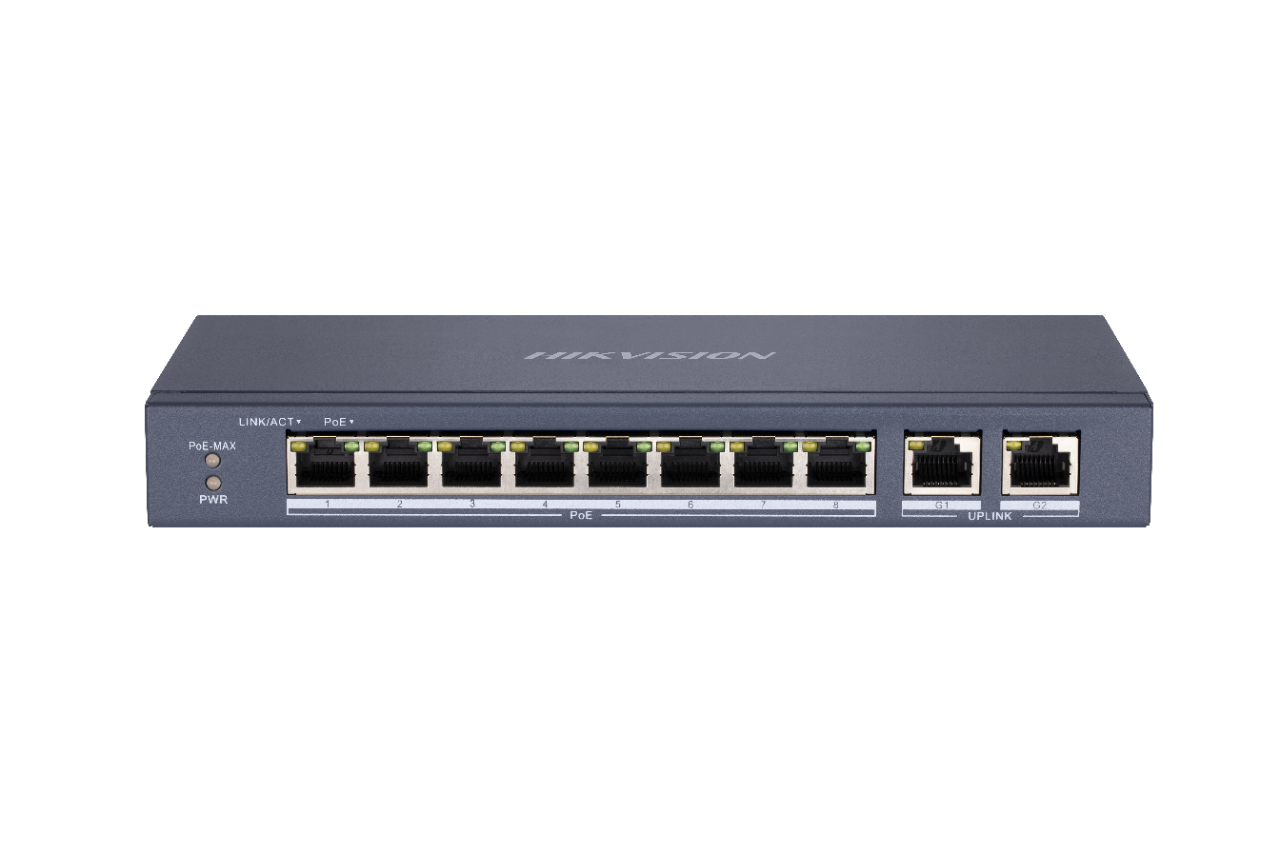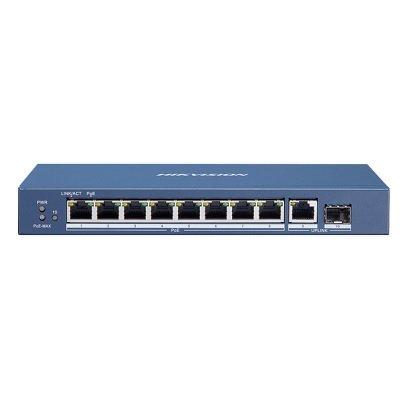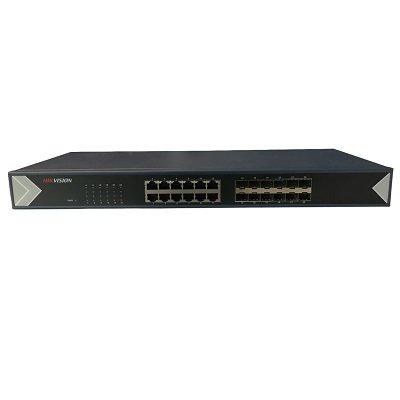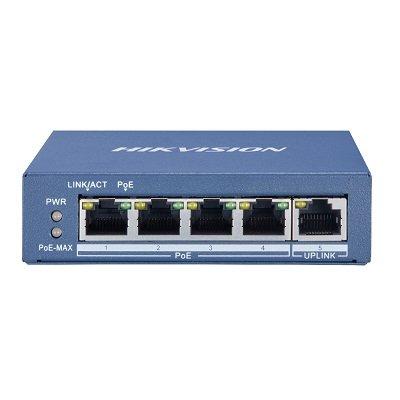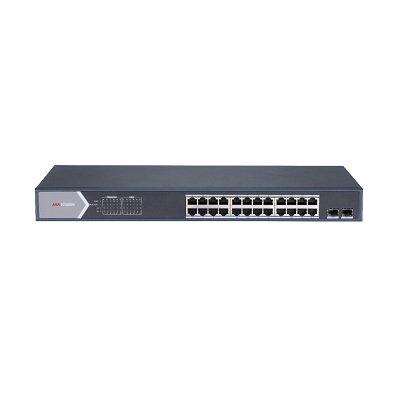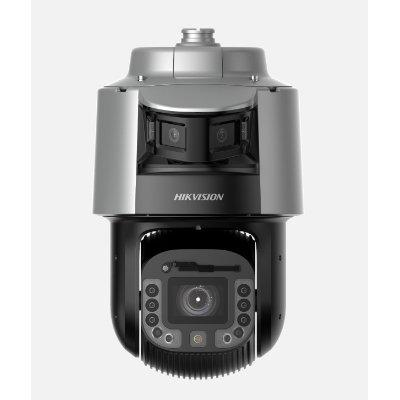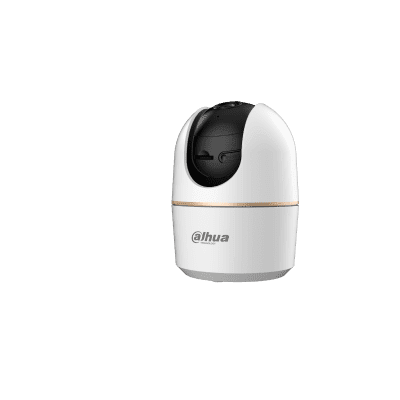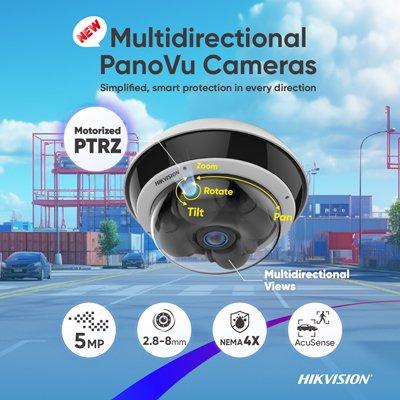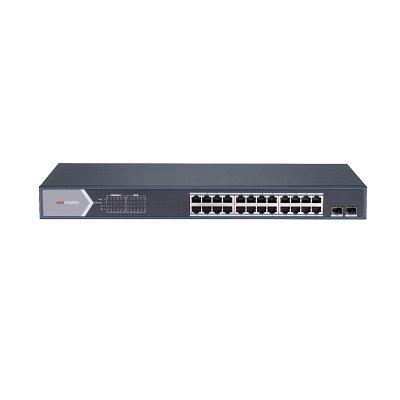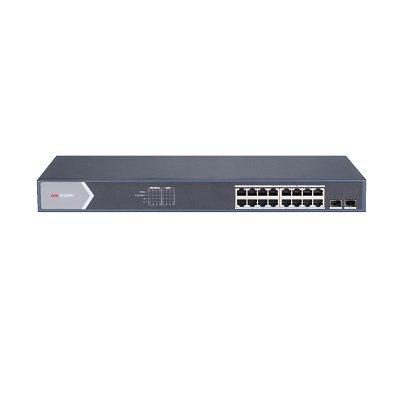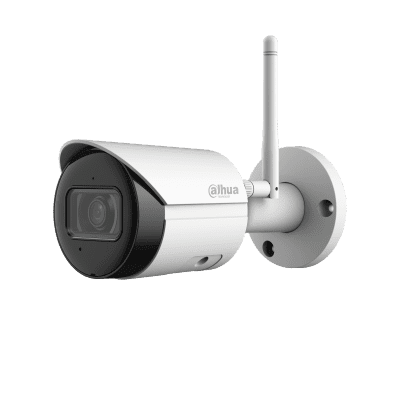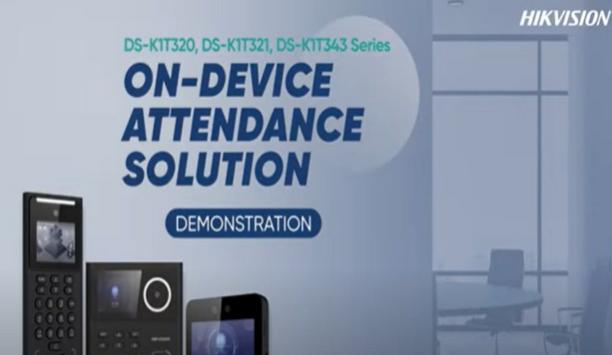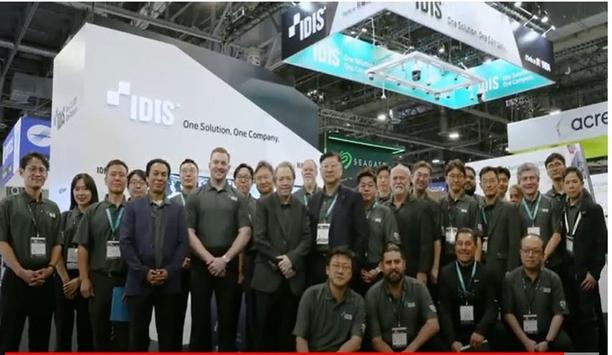Mall security
3DX-Ray has sold two AXIS-CXi, cabinet-based x-ray systems to secure high-threat sites in Rome, Italy. AXIS-CXi was originally designed to bring the same colour-differentiating image technology used in airport baggage screening, to the mail room environment. AXIS-CXi quickly showed its potential in a whole variety of security scenarios, from embassy lobbies to the homes of high-net-worth individuals. AXIS-CXi differentiated scans Grey scale is used for the recognition of shapes and the f...
Robotic Assistance Devices Inc. (RAD), a subsidiary of Artificial Intelligence Technology Solutions, Inc., has secured the deployment of two ROSA-P 360 devices through a proactive engagement with a prominent municipal Business Improvement District. The units are being deployed to enhance safety and visibility across key public spaces managed by the local community improvement organisation. This strategic placement reflects RAD’s growing influence in urban safety initia...
Hailo, the pioneering provider of edge AI processors, will demonstrate smart security cameras empowered by its vision processing units (VPUs) as well as video management systems empowered by its AI accelerators at ISC West 2025 in Las Vegas, Nevada at booth #31065 of the Venetian Expo. At the heart of Hailo’s showcase is its full suite of AI processors, including the Hailo-15 vision processors, which integrate seamlessly into pioneering security cameras to deliver superior image quality a...
iDenfy, a globally recognised pioneer in regulatory technology specialising in identity verification (KYC), anti-money laundering (AML), and business verification (KYB), introduced its new KYC solution for Shopify merchants. The new app is listed on Shopify as a user-friendly, no-code solution for Shopify users who don’t want to build an ID verification solution from scratch. Automated verification system iDenfy’s integration provides online businesses with an automated verificati...
As Taiwan's security industry continues to evolve with technological advancements and increased diversification, various vertical markets are poised for significant growth. Secutech, scheduled for 7–9 May 2025 at the Taipei Nangang Exhibition Centre, aims to capitalise on this burgeoning demand. Around 400 international and local exhibitors are set to showcase the latest technologies and solutions across six zones and pavilions at the fair, which serves as a vital platform to connect secu...
Retailers now often find themself in a precarious situation. Profit margins are being squeezed by widespread shoplifting: The Council on Criminal Justice reports that between the first half of 2023 and the first half of 2024, shoplifting reports increased by 24%. Meanwhile, the strategies used by shops to deal with this situation are alienating consumers and affecting total sales. Andy Jassy, the CEO of Amazon, stated during an earnings call that customers are now purchasing more pharmaceutica...
News
With a new event format, INTERSCHUTZ 2026 in Hanover is placing the growing global challenge of forest and vegetation fires at the center of the trade fair. As part of WildfireCamp@INTERSCHUTZ, experts from Germany and abroad will present innovative methods for combating and preventing vegetation fires throughout all six days of the trade fair. They will discuss strategies, approaches, and measures to detect fires at an early stage or, ideally, prevent them from occurring in the first place. Collaborative response zone At INTERSCHUTZ, various outdoor areas northeast of Hall 26 will be designated for partner presentations, open to both commercial and non-profit exhibitors as well as shared spaces. “With WildfireCamp@INTERSCHUTZ, we are creating excellent conditions for bringing together developers, suppliers, and emergency responders,” says Bernd Heinold, Head of INTERSCHUTZ at Deutsche Messe. “Exhibitors can gain first-hand insights into the challenges faced by emergency services, while responders can experience the latest technological advancements the industry has to offer.” WildfireCamp spotlight According to Heinold, the WildfireCamp in the outdoor area is designed to become “a small INTERSCHUTZ within INTERSCHUTZ”, enhancing the event’s program with an engaging and interactive component. “Climate change and its negative impacts are one of the key topics of our world's leading trade fair, and vegetation fires are a crucial part of this discussion,” adds Heinold. “We are therefore grateful to have attracted such a strong and knowledgeable partner network for WildfireCamp@INTERSCHUTZ.” Smart wildfire response This solution enables fire detection while ensuring automated alerting of emergency services. As one of the three partners, Bosch Building Technologies is presenting its Wildfire Detection service. This comprehensive solution enables early fire detection in forests, recreational areas, natural spaces near infrastructure, and outdoor areas close to buildings, while also ensuring the automated alerting of emergency services. “As a partner with many years of experience in networked fire protection solutions, we are fully leveraging the advantages of digitalization, connectivity, and artificial intelligence for our latest Wildfire Detection service,” says Thomas Reinicke, Head of the Solutions Business Life Safety division at Bosch Building Technologies. “We are proud to apply our fire protection expertise not only to safeguard people and property but also to contribute to the preservation of nature.” Wildfire collaboration Another partner is the European Forest Institute (EFI), which operates in 26 member countries with 116 participating organizations from 36 countries engaged in various scientific fields. “We want to use INTERSCHUTZ to put an even stronger focus on the issue of forest fires,” says Alexander Held from EFI. “It's about knowledge transfer and networking, equipment, training, strategy, and tactics. We can also greatly benefit from the experience of our international guests.” According to Held, addressing the issue is not solely the responsibility of fire services – it begins with policy-making and extends to forest owners. “We need a coalition of the willing,” he emphasizes. Integrated fire management The third partner of the WildfireCamp is @fire. As an aid organization with a broad portfolio, they are firmly rooted in vegetation firefighting. The volunteers from @fire are not only involved in training firefighters to combat vegetation fires but are also available in emergencies. Both in Germany and worldwide, they provide specialized personnel, including firefighting teams, fire analysts, and experts for coordinating aerial firefighting operations. “We look forward to working with various partners at WildfireCamp@INTERSCHUTZ to showcase innovative approaches and available solutions for integrated fire management,” says Dr. Martin Schmid from @fire. “For me, integrated fire management means considering prevention, deployment, and reforestation as interconnected elements. It also involves examining all aspects of these solutions, such as the proper tactical integration of firefighting operations, necessary logistics like water supply, the availability of specialized personnel, and suitable communication technology.”
At ISC West 2025, Resideo Technologies, a pioneering provider of solutions for home comfort, security and safety, introduced the new First Alert® CX4 Camera Series. Compatible with both the Resideo ProSeries Security System and Resideo’s new First Alert® VISTA® Hybrid Security System, the cameras offer ultra-high-definition continuous recording and enhanced analytics to monitor homes and small and medium businesses (SMB). Advanced video analytics “Our new First Alert CX4 Cameras are our most capable cameras ever and provide the features end-users need along with the brand name they can trust," said Ryan Park, Senior Product Director of Safety and Security at Resideo. "They deliver ultra-high-definition video, advanced video analytics and seamless integration with our security systems to provide comprehensive detection for homes and businesses." Three different models of the First Alert CX4 Camera Series With 4K sharpness, the First Alert CX4 Camera Series offers three different models to cover a range of applications: CX4B Bullet Camera for perimeter monitoring, warehouses, or retail applications. CX4T Turret Camera for lobbies, stairwells, and retail areas. CX4D Dome Camera for entrances, exits, offices, or food service applications. Integration with ProSeries and VISTA Hybrid Security System The Camera Series offers seamless integration with both the ProSeries and VISTA Hybrid Security System, and the following features: Advanced resolution. With an 8-megapixel resolution and a high-performance image sensor, the CX4 Series captures critical details with clarity, making it easy to identify faces, licence plates and other important details. Edge video storage. Edge-based continuous recording keeps video data on-site, reducing network requirements and costs. Cloud-based video-event storage sends the important event video to the cloud, reducing the impact of hardware theft or tampering while protecting important information. Intelligent viewing capabilities. Users can view live feeds of multiple cameras on one screen with the familiar Total Connect® 2.0 experience. Intelligent analytics identify people, vehicles, animals and packages to reduce unnecessary notifications, delivering actionable alerts that matter most. The First Alert CX4 Camera Series will be available at ADI Global Distribution, a Resideo company, in the third quarter, and were on display at the Resideo booth #10047.
Omada by TP-Link and VIGI by TP-Link, TP-Link Systems Inc.’s exclusive business solutions brands, are set to make waves at ISC West 2025 with the debut of their groundbreaking unified networking and surveillance solutions. At the event, the brands will showcase a seamless integration of VIGI’s cutting-edge surveillance solutions, Omada’s comprehensive networking systems, and the Omada Central platform—a revolutionary cloud-based solution that unifies the management of networking and surveillance under one roof. Secure & scalable Focused exclusively on the B2B market, Omada and VIGI deliver reliable, secure, and intuitive networking and surveillance products tailored to the unique needs of SMBs and enterprises. Designed to address diverse scenarios—including retail, hospitality, offices, MDUs, and outdoor environments—Omada and VIGI empower businesses to enhance security, streamline operations, and drive efficiency. Unified networking and surveillance solutions Integrating networking and surveillance into a single platform, TP-Link eliminates the system managment complecity By integrating networking and surveillance into a single platform, TP-Link eliminates the complexity of managing multiple systems. This unified approach enables unified management; easy deployment and setup; and remote troubleshooting, reducing operational overhead while enhancing efficiency, scalability, and security for businesses across industries. Omada Central is the cornerstone of TP-Link’s unified approach, offering a single platform to manage both Omada networking devices and VIGI surveillance systems. This next-generation solution enables businesses to seamlessly manage gateways, switches, access points, and security surveillance equipment across multiple locations. Simplified Management It simplifies setup with intelligent device recognition, auto surveillance VLAN, and Zero-Touch Provisioning while reducing total cost of ownership with a single-vendor solution. The platform also offers a free version, Omada Central Essentials, making it accessible for businesses of all sizes. VIGI: professional surveillance solutions VIGI provides professional, reliable, and comprehensive surveillance solutions tailored for businesses. Offering a diverse product range—including bullet, turret, dome, and fisheye cameras, 4/8/16/32/64-channel NVRs, 90W/180W solar power systems, cloud and local VMS, and user-friendly apps—VIGI ensures robust security while enhancing operational efficiency and profitability. VIGI offers a comprehensive range of durable cameras designed to deliver guaranteed high-quality images. The product lineup includes: 180° Panoramic 4K Cameras with Red-Blue Warning Lights Dual-Lens Stitching 4K Cameras 4G Outdoor Cameras with 3 LAN Ports AI ISP-Powered ColorPro 2.0 Cameras 5X Optical Zoom Cameras Complementing these cameras are 64-Channel H.265+ NVRs featuring 4 SATAs with a up to 64TB storage capability and 320Mbps incoming/outgoing bandwidth. Additionally, VIGI’s easy-to-install and stable solar power solution ensures long standby performance, making it ideal for off-grid locations. VIGI CVM System VIGI’s Cloud Video Management System (VMS) provides free, centralised management for multiple sites, leveraging AWS-based reliability and zero-touch maintenance to reduce on-site troubleshooting costs and ensure seamless surveillance. Complementing this is VIGI’s NPU-powered AI technology, offering advanced detection and analysis capabilities such as Behavior and Object Detection; People and Vehicle Attributes Analysis; and Precise People Counting. Together, these innovations deliver smarter, more efficient security solutions that enhance operational efficiency and drive business success. Omada: Comprehensive Networking Solutions Omada delivers a complete set of SDN solutions, designed to meet the needs of businesses With a full portfolio that includes access points, gateways, hardware controllers, cloud controllers, and a diverse range of switches, Omada provides end-to-end networking solutions tailored for scalability, performance, and ease of management. Omada’s full lineup of Wi-Fi 7 access points redefine wireless connectivity, offering unparalleled speed and reliability for both indoor and outdoor environments. Complementing these are Outdoor 4G Wi-Fi Gateways and connectivity solutions, such as the Outdoor PoE Switch and Wireless Long-Range PtMP/PtP Bridge, which ensure reliable networking even in remote or challenging locations. The switch portfolio spans from unmanaged switches for plug-and-play simplicity to easy-managed switches and advanced L3/L2 + switches, catering to businesses of all sizes and complexities. Effortless surveillance connectivity The Agile Series of Easy Managed PoE Switches with Free Cloud, designed specifically for surveillance systems. Paired with Omada Central Essentials for free cloud access, the Agile Series features Auto IP Camera/NVR Recognition, Extend Mode for PoE up to 250m, enhanced PoE Auto Recovery, and Remote Troubleshooting Tools with Cable Test, Reboot PoE Port Management, and SSH to minimise downtime, making it an ideal choice for businesses seeking efficient and scalable networking solutions tailored to surveillance needs. Seamless connectivity Omada & VIGI unified networking and surveillance solutions are tailored to meet the needs of diverse industries, including retail, hospitality, offices, residential, and outdoor environments. By combining Omada’s networking expertise, VIGI’s surveillance solutions, and the Omada Central platform, TP-Link delivers agile, secure, and scalable ecosystems that simplify infrastructure and enhance operational efficiency across the board.
DeterTech, a pioneer in intruder detection and identification, is proud to announce the immediate availability of SmartSpray® for rental or purchase. It is considered a game-changer in tackling retail crime as it enables police to forensically link masked offenders back to the scene of their crime, even weeks after they’ve left the store. Effective CCTV storage Retail crime is at its highest level on record, with over 2,000 incidents of violence and abuse per day Retail crime is at its highest level on record, with over 2,000 incidents of violence and abuse per day, reported in the British Retail Consortium’s Annual Crime Survey. A key factor is perpetrators’ feeling emboldened that they can anonymously steal, assault and abuse staff, and escape before security or police can intervene. While in-store CCTV can be effective, it is easily defeated by the most organised and violent offenders who choose to obscure their faces. SmartSpray system The SmartSpray system can be deployed standalone or integrated with the existing security system. When triggered, it releases a precise spray of SmartWater®, a forensic liquid that contains a code unique to each specific store. This glows under UV light and remains on skin and clothing for weeks, allowing police to identify suspects and pursue convictions. DeterTech’s forensic scientists DeterTech’s forensic scientists supply analysis and testimony in support of a belief DeterTech’s forensic scientists provide analysis and testimony in support of a conviction to the police and courts free of charge. Furthermore, they need only a speck smaller than the full stop at the end of this sentence to conclusively link an individual back to the scene of their crime. SmartSpray installation and servicing SmartSpray is immediately available for rental or purchase on flexible terms, including installation and servicing. DeterTech has also committed to providing unlimited refills free of charge following any activation for which a crime reference number is supplied. It is hoped this will further incentivise retailers to report all incidents to the police so that the true scale of retail crime can be nationally recognised. Cutting-edge solutions DeterTech has also committed to providing total refills free of charge BT is one of the first retailers to have deployed SmartSpray in selected stores. Richie Iwanoff, Corporate Investigations Team Manager, BT, says: “The well-being of our staff and customers is our number one priority." "We’re proud to be using cutting-edge solutions to keep them safe at all times. I sleep easier knowing criminals will think twice before targeting us”. DeterTech with businesses and communities Gary Higgins, Director of Security and Risk, DeterTech, adds: “SmartSpray has been very well received by both retailers and the police who recognise it will deter offences and help put violent criminals behind bars. It supports our purpose here at DeterTech of working with businesses and communities every day to provide greater peace of mind.” Hazel Goss, Development Officer, Secured by Design, concludes, “This is exactly the kind of collaboration we want to see from retailers, security providers, and law enforcement. Enhancing the police’s chances of unmasking offenders is vital in combating retail crime, which is sadly soaring across the country.”
Corsha, the pioneer in securing machine-to-machine (M2M) traffic for operational systems and critical infrastructure. Has announced an $18 million Series A-1 funding round led by SineWave Ventures, with participation from Razor’s Edge Ventures and Ten Eleven Ventures. Automated Trust Chains Machine identities currently outnumber human identities by a ratio of 50:1 Machine identities currently outnumber human identities by a ratio of 50:1 and are poised to accelerate further with increases in automation and the emergence of agentic AI. Organisations require a machine identity provider to authenticate, manage, and govern the rapidly growing traffic between machines. Due to legacy systems connecting with modern cloud-native systems, M2M communication can be particularly risky in operational technology (OT) and critical infrastructure environments. Imagine the challenges of securely connecting AI/ML models in the cloud to robotic controllers or manufacturing pipelines on a shop floor. Machine identity security To address this growing challenge, Corsha syncs with traditional IdPs like EntraID, Amazon IAM, and keycloak, builds and manages dynamic machine identities, and brings MFA to machines, securing and auditing M2M connections across OT and cloud environments. Through Corsha’s Machine Identity Provider, the company ensures that all machine-to-machine communication anywhere across an organisation is secure and can be trusted. Securing operational infrastructure “There’s such a huge modernisation opportunity in connecting operational systems and critical infrastructure yet without a strong identity solution, the risk is too high,” said Anusha Iyer, Founder and CEO of Corsha. “That is why we are so committed to our vision to securely connect the operational systems that run our world, delivering the first IdP focused on machines. Today’s significant investment from SineWave, Razor’s Edge, and Ten Eleven Ventures represents a strong vote of confidence in the Corsha team and platform and a strong belief in the value we deliver for our customers.” “Corsha has already proven we can support some of the most challenging technology stacks in the U.S. public sector — including for the U.S. Air Force — and we are thrilled to use this funding to bring our platform to more organisations globally.” Machine-first security “As machines begin to outnumber humans as actors on operational networks and the cloud, Corsha's ability to securely identify these non-human actors and control their access to systems and data enables exciting new ways to securely get things done,” said Pat Muio, Partner at Sinewave Ventures. “It is a solution that is urgently needed.” Go-to-market expansion Corsha plans to use the funding for a variety of objectives, including: Expanding the company’s Go-to-Market team to help more customers in the operational systems, critical infrastructure, and manufacturing sectors Launching Corsha Labs, a physical and digital research space to showcase Corsha’s “shop floor to cloud” expertise and take the platform to the next level Scaling the use of AI/ML in the Corsha “m-IdP” to expand our agentless behavioral identities as well as adaptive identity and access management (IAM) for M2M communication Momentum milestones The funding builds upon Corsha’s already robust momentum, including: 100% YoY ARR by growth An authorisation to operate with the U.S. Government in critical manufacturing environments The addition of Jeff Hudson, CEO Emeritus of Venafi - a CyberArk company, to Corsha’s Board of Directors
The future of security requires smarter, more efficient and secure solutions, and Hanwha Vision is helping to drive this transformation with the launch of its most advanced AI-powered System on a Chip (SoC), Wisenet 9. After nearly four years of extensive research and testing, Wisenet 9’s advanced features help elevate our cameras into an AI-driven era, setting a new standard for performance, accuracy, and security. Unmatched clarity “With Wisenet 9, you can count on the superior image quality that delivers the best possible video in the toughest environments, as well as the accuracy of the AI-generated data, whether statistical or event-driven,” states John Lutz Boorman, Head of Product and Marketing at Hanwha Vision Europe. AI revolution at the Edge Wisenet 9’s enhanced edge AI capabilities are essential in this innovation era, where the volume and complexity of security threats demand real-time, accurate analysis. By elevating edge-device performance, AI empowers systems to quickly analyse vast amounts of video data and discern crucial patterns and anomalies. A key differentiator driving this transformation is the two Neural Processing Units (NPUs), which have improved inference performance three-fold compared to Wisenet 7, the previous SoC generation. While one NPU handles image processing, the other focuses on object detection and advanced analytics. This dual NPU concept was introduced to ensure video quality and analytics have independent resources, preventing one function from impacting the performance of the other. Unveiling hidden details Wisenet 9 uses AI to analyse visual data with greater precision. By leveraging a powerful NPU, the system moves past traditional image processing to extract critical information, unlocking previously unseen details with remarkable clarity in tough environments. This enhanced visual intelligence is achieved through a suite of sophisticated AI features, including AI-based extreme Wide Dynamic Range, AI-powered noise reduction, alongside image enhancements. Combined, these technologies deliver exceptional clarity, even under the most challenging conditions. The AI-driven image enhancement, powered by an independent NPU, ensures that every detail, no matter how subtle, is captured and analysed. AI efficiency redefined The H.265 codec provides high video quality with optimised bandwidth AI is powerful, but it can also be resource-intensive. Wisenet 9 flips that script. It’s not just smart, it’s efficient - optimising every aspect of its operation.By intelligently reducing noise, Wisenet 9 achieves a remarkable level of efficiency in data volume reduction, resulting in significantly reduced bandwidth consumption and storage requirements. This core efficiency is further bolstered by the latest H.265 compression technology. The H.265 codec provides high video quality with optimised bandwidth, ensuring reliable, real-time video processing and transmission - critical for uninterrupted 24/7 security. Furthermore, this optimised H.265 support enables consistently high performance in demanding environments, essential for system stability, and streamlines data management in cloud environments, efficiently controlling storage and transfer costs. Seamless integration Wisenet 9’s H.265 codec, aligned with current industry standards and ONVIF profiles, ensures broad hardware compatibility and seamless integration with your existing security infrastructure and provides a dependable foundation for long-term system reliability. Beyond this, Wisenet 9 leverages AI for advanced analytics. Its enhanced AI technology provides detailed attribute analysis, including colour, bag, face mask, glasses, age, and gender, along with other key analytics like people and vehicle counting, slip and fall detection, crowd detection, heatmap, queue management, and more, enabling faster and more informed decision-making. Smart surveillance tech To further amplify its capabilities, Wisenet 9 incorporates several key technologies that power the next generation of efficiency, including: Re-Identification RE-ID technology is a deep learning-based approach to matching visual identities across non-overlapping camera views. RE-ID extracts feature vectors representing unique visual attributes, enabling video management systems to recognise and track individuals even with changes in appearance or conditions. For example, it can identify a person entering a building with an orange jacket and later recognise the same person leaving with the jacket unzipped and a hat, across different cameras. Dynamic Privacy Masking This AI-based feature efficiently safeguards biometric personal data, ensuring compliance with privacy regulations. Wisenet 9 offers flexible masking options, including both opaque and mosaic masking, allowing users to tailor privacy protection to their specific needs and preferences. Widening horizons with expandable AI Wisenet 9 has been engineered with unparalleled AI capabilities to recognise security demands Recognising that security demands are as diverse as the industries they serve, Wisenet 9 has been engineered with unparalleled AI capabilities. This empowers users to tailor their security systems. § AI Packs: Wisenet 9 is compatible with AI Packs (Traffic, Retail, Factory), designed to deliver actionable insights specific to various sectors. AI Sound Classification AI-based sound classification enables rapid detection and directional awareness of critical events like gunshots, glass breaks, and screaming, to enhance situational awareness. Hanwha vision open platform Wisenet 9 empowers users to create customised security solutions by providing the flexibility to tailor their systems with custom applications for video analytics, storage, and other functionalities. Improved end-to-end protection Wisenet 9 significantly enhances end-to-end protection by building upon the robust security foundation of Wisenet 7. It inherits essential features like Secure Storage, OS, and Boot, which protect critical chipset data and prevent unauthorised software execution. Moreover, the inclusion of a FIPS 140-3 Level 3 elevates security to an exceptional standard. This certification guarantees that the chipset adheres to rigorous security protocols, assuring users of comprehensive data protection.
With a new event format, INTERSCHUTZ 2026 in Hanover is placing the growing global challenge of forest and vegetation fires at the center of the trade fair. As part of WildfireCamp@INTERSCHUTZ, experts from Germany and abroad will present innovative methods for combating and preventing vegetation fires throughout all six days of the trade fair. They will discuss strategies, approaches, and measures to detect fires at an early stage or, ideally, prevent them from occurring in the first place. Collaborative response zone At INTERSCHUTZ, various outdoor areas northeast of Hall 26 will be designated for partner presentations, open to both commercial and non-profit exhibitors as well as shared spaces. “With WildfireCamp@INTERSCHUTZ, we are creating excellent conditions for bringing together developers, suppliers, and emergency responders,” says Bernd Heinold, Head of INTERSCHUTZ at Deutsche Messe. “Exhibitors can gain first-hand insights into the challenges faced by emergency services, while responders can experience the latest technological advancements the industry has to offer.” WildfireCamp spotlight According to Heinold, the WildfireCamp in the outdoor area is designed to become “a small INTERSCHUTZ within INTERSCHUTZ”, enhancing the event’s program with an engaging and interactive component. “Climate change and its negative impacts are one of the key topics of our world's leading trade fair, and vegetation fires are a crucial part of this discussion,” adds Heinold. “We are therefore grateful to have attracted such a strong and knowledgeable partner network for WildfireCamp@INTERSCHUTZ.” Smart wildfire response This solution enables fire detection while ensuring automated alerting of emergency services. As one of the three partners, Bosch Building Technologies is presenting its Wildfire Detection service. This comprehensive solution enables early fire detection in forests, recreational areas, natural spaces near infrastructure, and outdoor areas close to buildings, while also ensuring the automated alerting of emergency services. “As a partner with many years of experience in networked fire protection solutions, we are fully leveraging the advantages of digitalization, connectivity, and artificial intelligence for our latest Wildfire Detection service,” says Thomas Reinicke, Head of the Solutions Business Life Safety division at Bosch Building Technologies. “We are proud to apply our fire protection expertise not only to safeguard people and property but also to contribute to the preservation of nature.” Wildfire collaboration Another partner is the European Forest Institute (EFI), which operates in 26 member countries with 116 participating organizations from 36 countries engaged in various scientific fields. “We want to use INTERSCHUTZ to put an even stronger focus on the issue of forest fires,” says Alexander Held from EFI. “It's about knowledge transfer and networking, equipment, training, strategy, and tactics. We can also greatly benefit from the experience of our international guests.” According to Held, addressing the issue is not solely the responsibility of fire services – it begins with policy-making and extends to forest owners. “We need a coalition of the willing,” he emphasizes. Integrated fire management The third partner of the WildfireCamp is @fire. As an aid organization with a broad portfolio, they are firmly rooted in vegetation firefighting. The volunteers from @fire are not only involved in training firefighters to combat vegetation fires but are also available in emergencies. Both in Germany and worldwide, they provide specialized personnel, including firefighting teams, fire analysts, and experts for coordinating aerial firefighting operations. “We look forward to working with various partners at WildfireCamp@INTERSCHUTZ to showcase innovative approaches and available solutions for integrated fire management,” says Dr. Martin Schmid from @fire. “For me, integrated fire management means considering prevention, deployment, and reforestation as interconnected elements. It also involves examining all aspects of these solutions, such as the proper tactical integration of firefighting operations, necessary logistics like water supply, the availability of specialized personnel, and suitable communication technology.”
At ISC West 2025, Resideo Technologies, a pioneering provider of solutions for home comfort, security and safety, introduced the new First Alert® CX4 Camera Series. Compatible with both the Resideo ProSeries Security System and Resideo’s new First Alert® VISTA® Hybrid Security System, the cameras offer ultra-high-definition continuous recording and enhanced analytics to monitor homes and small and medium businesses (SMB). Advanced video analytics “Our new First Alert CX4 Cameras are our most capable cameras ever and provide the features end-users need along with the brand name they can trust," said Ryan Park, Senior Product Director of Safety and Security at Resideo. "They deliver ultra-high-definition video, advanced video analytics and seamless integration with our security systems to provide comprehensive detection for homes and businesses." Three different models of the First Alert CX4 Camera Series With 4K sharpness, the First Alert CX4 Camera Series offers three different models to cover a range of applications: CX4B Bullet Camera for perimeter monitoring, warehouses, or retail applications. CX4T Turret Camera for lobbies, stairwells, and retail areas. CX4D Dome Camera for entrances, exits, offices, or food service applications. Integration with ProSeries and VISTA Hybrid Security System The Camera Series offers seamless integration with both the ProSeries and VISTA Hybrid Security System, and the following features: Advanced resolution. With an 8-megapixel resolution and a high-performance image sensor, the CX4 Series captures critical details with clarity, making it easy to identify faces, licence plates and other important details. Edge video storage. Edge-based continuous recording keeps video data on-site, reducing network requirements and costs. Cloud-based video-event storage sends the important event video to the cloud, reducing the impact of hardware theft or tampering while protecting important information. Intelligent viewing capabilities. Users can view live feeds of multiple cameras on one screen with the familiar Total Connect® 2.0 experience. Intelligent analytics identify people, vehicles, animals and packages to reduce unnecessary notifications, delivering actionable alerts that matter most. The First Alert CX4 Camera Series will be available at ADI Global Distribution, a Resideo company, in the third quarter, and were on display at the Resideo booth #10047.
Omada by TP-Link and VIGI by TP-Link, TP-Link Systems Inc.’s exclusive business solutions brands, are set to make waves at ISC West 2025 with the debut of their groundbreaking unified networking and surveillance solutions. At the event, the brands will showcase a seamless integration of VIGI’s cutting-edge surveillance solutions, Omada’s comprehensive networking systems, and the Omada Central platform—a revolutionary cloud-based solution that unifies the management of networking and surveillance under one roof. Secure & scalable Focused exclusively on the B2B market, Omada and VIGI deliver reliable, secure, and intuitive networking and surveillance products tailored to the unique needs of SMBs and enterprises. Designed to address diverse scenarios—including retail, hospitality, offices, MDUs, and outdoor environments—Omada and VIGI empower businesses to enhance security, streamline operations, and drive efficiency. Unified networking and surveillance solutions Integrating networking and surveillance into a single platform, TP-Link eliminates the system managment complecity By integrating networking and surveillance into a single platform, TP-Link eliminates the complexity of managing multiple systems. This unified approach enables unified management; easy deployment and setup; and remote troubleshooting, reducing operational overhead while enhancing efficiency, scalability, and security for businesses across industries. Omada Central is the cornerstone of TP-Link’s unified approach, offering a single platform to manage both Omada networking devices and VIGI surveillance systems. This next-generation solution enables businesses to seamlessly manage gateways, switches, access points, and security surveillance equipment across multiple locations. Simplified Management It simplifies setup with intelligent device recognition, auto surveillance VLAN, and Zero-Touch Provisioning while reducing total cost of ownership with a single-vendor solution. The platform also offers a free version, Omada Central Essentials, making it accessible for businesses of all sizes. VIGI: professional surveillance solutions VIGI provides professional, reliable, and comprehensive surveillance solutions tailored for businesses. Offering a diverse product range—including bullet, turret, dome, and fisheye cameras, 4/8/16/32/64-channel NVRs, 90W/180W solar power systems, cloud and local VMS, and user-friendly apps—VIGI ensures robust security while enhancing operational efficiency and profitability. VIGI offers a comprehensive range of durable cameras designed to deliver guaranteed high-quality images. The product lineup includes: 180° Panoramic 4K Cameras with Red-Blue Warning Lights Dual-Lens Stitching 4K Cameras 4G Outdoor Cameras with 3 LAN Ports AI ISP-Powered ColorPro 2.0 Cameras 5X Optical Zoom Cameras Complementing these cameras are 64-Channel H.265+ NVRs featuring 4 SATAs with a up to 64TB storage capability and 320Mbps incoming/outgoing bandwidth. Additionally, VIGI’s easy-to-install and stable solar power solution ensures long standby performance, making it ideal for off-grid locations. VIGI CVM System VIGI’s Cloud Video Management System (VMS) provides free, centralised management for multiple sites, leveraging AWS-based reliability and zero-touch maintenance to reduce on-site troubleshooting costs and ensure seamless surveillance. Complementing this is VIGI’s NPU-powered AI technology, offering advanced detection and analysis capabilities such as Behavior and Object Detection; People and Vehicle Attributes Analysis; and Precise People Counting. Together, these innovations deliver smarter, more efficient security solutions that enhance operational efficiency and drive business success. Omada: Comprehensive Networking Solutions Omada delivers a complete set of SDN solutions, designed to meet the needs of businesses With a full portfolio that includes access points, gateways, hardware controllers, cloud controllers, and a diverse range of switches, Omada provides end-to-end networking solutions tailored for scalability, performance, and ease of management. Omada’s full lineup of Wi-Fi 7 access points redefine wireless connectivity, offering unparalleled speed and reliability for both indoor and outdoor environments. Complementing these are Outdoor 4G Wi-Fi Gateways and connectivity solutions, such as the Outdoor PoE Switch and Wireless Long-Range PtMP/PtP Bridge, which ensure reliable networking even in remote or challenging locations. The switch portfolio spans from unmanaged switches for plug-and-play simplicity to easy-managed switches and advanced L3/L2 + switches, catering to businesses of all sizes and complexities. Effortless surveillance connectivity The Agile Series of Easy Managed PoE Switches with Free Cloud, designed specifically for surveillance systems. Paired with Omada Central Essentials for free cloud access, the Agile Series features Auto IP Camera/NVR Recognition, Extend Mode for PoE up to 250m, enhanced PoE Auto Recovery, and Remote Troubleshooting Tools with Cable Test, Reboot PoE Port Management, and SSH to minimise downtime, making it an ideal choice for businesses seeking efficient and scalable networking solutions tailored to surveillance needs. Seamless connectivity Omada & VIGI unified networking and surveillance solutions are tailored to meet the needs of diverse industries, including retail, hospitality, offices, residential, and outdoor environments. By combining Omada’s networking expertise, VIGI’s surveillance solutions, and the Omada Central platform, TP-Link delivers agile, secure, and scalable ecosystems that simplify infrastructure and enhance operational efficiency across the board.
DeterTech, a pioneer in intruder detection and identification, is proud to announce the immediate availability of SmartSpray® for rental or purchase. It is considered a game-changer in tackling retail crime as it enables police to forensically link masked offenders back to the scene of their crime, even weeks after they’ve left the store. Effective CCTV storage Retail crime is at its highest level on record, with over 2,000 incidents of violence and abuse per day Retail crime is at its highest level on record, with over 2,000 incidents of violence and abuse per day, reported in the British Retail Consortium’s Annual Crime Survey. A key factor is perpetrators’ feeling emboldened that they can anonymously steal, assault and abuse staff, and escape before security or police can intervene. While in-store CCTV can be effective, it is easily defeated by the most organised and violent offenders who choose to obscure their faces. SmartSpray system The SmartSpray system can be deployed standalone or integrated with the existing security system. When triggered, it releases a precise spray of SmartWater®, a forensic liquid that contains a code unique to each specific store. This glows under UV light and remains on skin and clothing for weeks, allowing police to identify suspects and pursue convictions. DeterTech’s forensic scientists DeterTech’s forensic scientists supply analysis and testimony in support of a belief DeterTech’s forensic scientists provide analysis and testimony in support of a conviction to the police and courts free of charge. Furthermore, they need only a speck smaller than the full stop at the end of this sentence to conclusively link an individual back to the scene of their crime. SmartSpray installation and servicing SmartSpray is immediately available for rental or purchase on flexible terms, including installation and servicing. DeterTech has also committed to providing unlimited refills free of charge following any activation for which a crime reference number is supplied. It is hoped this will further incentivise retailers to report all incidents to the police so that the true scale of retail crime can be nationally recognised. Cutting-edge solutions DeterTech has also committed to providing total refills free of charge BT is one of the first retailers to have deployed SmartSpray in selected stores. Richie Iwanoff, Corporate Investigations Team Manager, BT, says: “The well-being of our staff and customers is our number one priority." "We’re proud to be using cutting-edge solutions to keep them safe at all times. I sleep easier knowing criminals will think twice before targeting us”. DeterTech with businesses and communities Gary Higgins, Director of Security and Risk, DeterTech, adds: “SmartSpray has been very well received by both retailers and the police who recognise it will deter offences and help put violent criminals behind bars. It supports our purpose here at DeterTech of working with businesses and communities every day to provide greater peace of mind.” Hazel Goss, Development Officer, Secured by Design, concludes, “This is exactly the kind of collaboration we want to see from retailers, security providers, and law enforcement. Enhancing the police’s chances of unmasking offenders is vital in combating retail crime, which is sadly soaring across the country.”
Corsha, the pioneer in securing machine-to-machine (M2M) traffic for operational systems and critical infrastructure. Has announced an $18 million Series A-1 funding round led by SineWave Ventures, with participation from Razor’s Edge Ventures and Ten Eleven Ventures. Automated Trust Chains Machine identities currently outnumber human identities by a ratio of 50:1 Machine identities currently outnumber human identities by a ratio of 50:1 and are poised to accelerate further with increases in automation and the emergence of agentic AI. Organisations require a machine identity provider to authenticate, manage, and govern the rapidly growing traffic between machines. Due to legacy systems connecting with modern cloud-native systems, M2M communication can be particularly risky in operational technology (OT) and critical infrastructure environments. Imagine the challenges of securely connecting AI/ML models in the cloud to robotic controllers or manufacturing pipelines on a shop floor. Machine identity security To address this growing challenge, Corsha syncs with traditional IdPs like EntraID, Amazon IAM, and keycloak, builds and manages dynamic machine identities, and brings MFA to machines, securing and auditing M2M connections across OT and cloud environments. Through Corsha’s Machine Identity Provider, the company ensures that all machine-to-machine communication anywhere across an organisation is secure and can be trusted. Securing operational infrastructure “There’s such a huge modernisation opportunity in connecting operational systems and critical infrastructure yet without a strong identity solution, the risk is too high,” said Anusha Iyer, Founder and CEO of Corsha. “That is why we are so committed to our vision to securely connect the operational systems that run our world, delivering the first IdP focused on machines. Today’s significant investment from SineWave, Razor’s Edge, and Ten Eleven Ventures represents a strong vote of confidence in the Corsha team and platform and a strong belief in the value we deliver for our customers.” “Corsha has already proven we can support some of the most challenging technology stacks in the U.S. public sector — including for the U.S. Air Force — and we are thrilled to use this funding to bring our platform to more organisations globally.” Machine-first security “As machines begin to outnumber humans as actors on operational networks and the cloud, Corsha's ability to securely identify these non-human actors and control their access to systems and data enables exciting new ways to securely get things done,” said Pat Muio, Partner at Sinewave Ventures. “It is a solution that is urgently needed.” Go-to-market expansion Corsha plans to use the funding for a variety of objectives, including: Expanding the company’s Go-to-Market team to help more customers in the operational systems, critical infrastructure, and manufacturing sectors Launching Corsha Labs, a physical and digital research space to showcase Corsha’s “shop floor to cloud” expertise and take the platform to the next level Scaling the use of AI/ML in the Corsha “m-IdP” to expand our agentless behavioral identities as well as adaptive identity and access management (IAM) for M2M communication Momentum milestones The funding builds upon Corsha’s already robust momentum, including: 100% YoY ARR by growth An authorisation to operate with the U.S. Government in critical manufacturing environments The addition of Jeff Hudson, CEO Emeritus of Venafi - a CyberArk company, to Corsha’s Board of Directors
The future of security requires smarter, more efficient and secure solutions, and Hanwha Vision is helping to drive this transformation with the launch of its most advanced AI-powered System on a Chip (SoC), Wisenet 9. After nearly four years of extensive research and testing, Wisenet 9’s advanced features help elevate our cameras into an AI-driven era, setting a new standard for performance, accuracy, and security. Unmatched clarity “With Wisenet 9, you can count on the superior image quality that delivers the best possible video in the toughest environments, as well as the accuracy of the AI-generated data, whether statistical or event-driven,” states John Lutz Boorman, Head of Product and Marketing at Hanwha Vision Europe. AI revolution at the Edge Wisenet 9’s enhanced edge AI capabilities are essential in this innovation era, where the volume and complexity of security threats demand real-time, accurate analysis. By elevating edge-device performance, AI empowers systems to quickly analyse vast amounts of video data and discern crucial patterns and anomalies. A key differentiator driving this transformation is the two Neural Processing Units (NPUs), which have improved inference performance three-fold compared to Wisenet 7, the previous SoC generation. While one NPU handles image processing, the other focuses on object detection and advanced analytics. This dual NPU concept was introduced to ensure video quality and analytics have independent resources, preventing one function from impacting the performance of the other. Unveiling hidden details Wisenet 9 uses AI to analyse visual data with greater precision. By leveraging a powerful NPU, the system moves past traditional image processing to extract critical information, unlocking previously unseen details with remarkable clarity in tough environments. This enhanced visual intelligence is achieved through a suite of sophisticated AI features, including AI-based extreme Wide Dynamic Range, AI-powered noise reduction, alongside image enhancements. Combined, these technologies deliver exceptional clarity, even under the most challenging conditions. The AI-driven image enhancement, powered by an independent NPU, ensures that every detail, no matter how subtle, is captured and analysed. AI efficiency redefined The H.265 codec provides high video quality with optimised bandwidth AI is powerful, but it can also be resource-intensive. Wisenet 9 flips that script. It’s not just smart, it’s efficient - optimising every aspect of its operation.By intelligently reducing noise, Wisenet 9 achieves a remarkable level of efficiency in data volume reduction, resulting in significantly reduced bandwidth consumption and storage requirements. This core efficiency is further bolstered by the latest H.265 compression technology. The H.265 codec provides high video quality with optimised bandwidth, ensuring reliable, real-time video processing and transmission - critical for uninterrupted 24/7 security. Furthermore, this optimised H.265 support enables consistently high performance in demanding environments, essential for system stability, and streamlines data management in cloud environments, efficiently controlling storage and transfer costs. Seamless integration Wisenet 9’s H.265 codec, aligned with current industry standards and ONVIF profiles, ensures broad hardware compatibility and seamless integration with your existing security infrastructure and provides a dependable foundation for long-term system reliability. Beyond this, Wisenet 9 leverages AI for advanced analytics. Its enhanced AI technology provides detailed attribute analysis, including colour, bag, face mask, glasses, age, and gender, along with other key analytics like people and vehicle counting, slip and fall detection, crowd detection, heatmap, queue management, and more, enabling faster and more informed decision-making. Smart surveillance tech To further amplify its capabilities, Wisenet 9 incorporates several key technologies that power the next generation of efficiency, including: Re-Identification RE-ID technology is a deep learning-based approach to matching visual identities across non-overlapping camera views. RE-ID extracts feature vectors representing unique visual attributes, enabling video management systems to recognise and track individuals even with changes in appearance or conditions. For example, it can identify a person entering a building with an orange jacket and later recognise the same person leaving with the jacket unzipped and a hat, across different cameras. Dynamic Privacy Masking This AI-based feature efficiently safeguards biometric personal data, ensuring compliance with privacy regulations. Wisenet 9 offers flexible masking options, including both opaque and mosaic masking, allowing users to tailor privacy protection to their specific needs and preferences. Widening horizons with expandable AI Wisenet 9 has been engineered with unparalleled AI capabilities to recognise security demands Recognising that security demands are as diverse as the industries they serve, Wisenet 9 has been engineered with unparalleled AI capabilities. This empowers users to tailor their security systems. § AI Packs: Wisenet 9 is compatible with AI Packs (Traffic, Retail, Factory), designed to deliver actionable insights specific to various sectors. AI Sound Classification AI-based sound classification enables rapid detection and directional awareness of critical events like gunshots, glass breaks, and screaming, to enhance situational awareness. Hanwha vision open platform Wisenet 9 empowers users to create customised security solutions by providing the flexibility to tailor their systems with custom applications for video analytics, storage, and other functionalities. Improved end-to-end protection Wisenet 9 significantly enhances end-to-end protection by building upon the robust security foundation of Wisenet 7. It inherits essential features like Secure Storage, OS, and Boot, which protect critical chipset data and prevent unauthorised software execution. Moreover, the inclusion of a FIPS 140-3 Level 3 elevates security to an exceptional standard. This certification guarantees that the chipset adheres to rigorous security protocols, assuring users of comprehensive data protection.


Expert commentary
For businesses today, loss prevention is no longer just about safeguarding inventory from theft. While retail theft makes frequent headlines in the United States, and is indeed the leading cause of shrinkage, The National Retail Foundation (NRF) has reported that process failures, operational inefficiencies and employee theft also drive significant losses. Legacy security systems In 2022, the shrink loss is estimated to be $ 120 billion in the United States, and that’s for retail alone. Industries like hospitality, healthcare, manufacturing, and transportation all face similar challenges even though loss and inefficiency take different forms in each of these fields. As shrinks from theft and operational inefficiency have already put margins of companies under pressure, we are increasingly seeing more businesses demand AI-powered security systems with advanced video analytics, capable of addressing both security and operational inefficiencies that their legacy security systems could not. Understanding the full scope of loss Package theft is a common problem in commercial buildings, with which box detection in mailrooms Starbucks’ recent announcement of reinventing its franchise operation due to faltering sales is a great example of how operational efficiency can take a toll on business revenue. In restaurants or hotels, failing to anticipate customer flow can lead to long wait times or inefficient use of staff, frustrating guests. Take, for example, in hospitals, inefficient patient flow management can lead to overcrowded waiting areas and delays in care, compromising patient health. Similarly, in manufacturing, poorly optimised assembly lines create production bottlenecks, delaying output and raising overhead. Package theft is another common problem in commercial buildings, with which package detection in mailrooms can mitigate loss from deliveries. These invisible leaks creepingly drain profits across industries, and require future-proof solutions that not only confirm what’s already known but also provide actionable insights for improvement. Transforming security into a powerhouse for efficiency Progress continues to advance across these areas, fuelling optimism for what lies ahead. Thanks to the rise of artificial intelligence and data analytics, some security solutions are already integrated with facial recognition and licence plate detection capabilities, as well as Virtual Fences that help ensure that only authorised personnel or vehicles enter sensitive areas. This can be especially useful for manufacturing environments, where controlling access to high-risk zones and protecting valuable assets are critical. Some modern security systems can even offer more than a watchful eye, doubling as a data analytic tool beyond traditional surveillance limits. Heat mapping in security AI technology Heat mapping in security AI technology analyses ways of movement and behaviour in a retail environment Modern security systems are now capable of tracking foot traffic, analysing customer behaviour, and even identifying bottlenecks in real time by incorporating different technologies such as heatmapping, people counting and queue length monitoring for long lineups. Heat mapping in security AI technology analyses patterns of movement and behaviour in a retail environment by visually representing areas with high foot traffic. With tracking over time and identifying potential vulnerable and hot spots for potential theft and fraud, resulting in change of store layout, deploy additional resources in high traffic areas and physical security placement. Predictive security analytics AI people counting in security utilises sensors and cameras to accurately track the number of individuals entering and exiting a space in real time. This data helps businesses optimise staffing levels, enhance customer experience, and improve overall operational efficiency by aligning resources with foot traffic trends. Predictive security analytics, such as heat mapping and people counting, are not new inventions. But I believe the ability to integrate all these functionality into a single system will allow these technologies to further mature and expand their footprint in near future. Rather than relying on separate tools for each business function, businesses can now use a single, integrated system to gather actionable data while continuing to secure protection through video surveillance. You Can’t Manage What You Can’t Measure AI-powered security systems give businesses access to a wealth of data that they can use AI-powered security systems give businesses access to a wealth of data that they can use to precisely pinpoint where losses are happening. This is key to solving the problem of shrinkage, which often goes beyond simple theft. Consider the Starbucks case mentioned earlier, while Starbucks hasn't specified how it plans to achieve operational efficiency to “enhance the cafe experience”, an AI-powered security system could provide an all-encompassing solution to minimise bottlenecks during peak hours, optimise store layouts, and allocate staff more efficiently. The impact of this technology can be tremendous as it not only enhances the customer experience but also reduces inefficiencies that contribute to lost revenue. By analysing patterns, conducting Forensic Review with Smart Search to quickly locate incidents, and understanding the root causes of loss, companies can implement targeted solutions that reduce shrinkage and streamline operations. Future-proof solutions Walmart is using foot traffic analytics to predict demand and manage inventory Companies like Walmart are already using foot traffic analytics to predict demand and manage inventory. But beyond basic predictive inventory analysis and crowd control, the data gathered will have the potential to be combined with other business functions, smart energy management, pricing and marketing strategy, just to name a few. Investing in a security system that integrates AI video analytics, such as package detection, queue length monitoring, and Virtual Fences, can provide future-proof solutions that also enhance operational efficiency. Looking ahead With New York State's introduction of new Retail Security measures to encourage businesses to strengthen their security, we've seen increased interest. However, modern security systems with real-time analytics are now offering companies more than just protection—they’re providing valuable insights into operations, transforming security from a cost burden into a powerful tool for growth and efficiency. As businesses continue to adopt AI-powered security systems, it's clear that the role of security is evolving beyond traditional surveillance. These advanced systems are no longer just about protection, but help businesses grapple with increasingly complex challenges. By transforming security from a reactive expense into a proactive, data-driven asset, companies can stay ahead of the curve, managing not only what they can see, but also what they’ve been missing.
Technology advances in the security industry are transforming the way modern systems are designed and installed. Customers today are looking for greater scalability and flexibility, lower up-front costs, and operational efficiency. Cloud-based software as a service (SaaS) solutions, AI-enhanced tools, and IoT-enabled sensors and devices are increasingly in demand. The traditional role of the systems integrator is evolving as a result. While security integrators have always worked closely with end users, today’s pioneers go beyond installation and maintenance. They align security strategies with evolving business needs, integrating IT, cybersecurity, and data-driven insights into their offerings. A look at the past and present Integrators are often asked to help tailor solutions and provide expertise in IT and cybersecurity Traditionally, systems integrators specialised in installing and maintaining wired physical security systems like CCTV, access control, and alarms. The service model was built around large, up-front investments and project-based installations. However, today customers are seeking comprehensive solutions. They’re looking to wirelessly integrate security infrastructure with cloud-based SaaS systems and IoT devices. While modern systems are often faster to deploy, they’re most effective when supported by ongoing consulting and strategic planning. Integrators are often asked to help tailor solutions and provide expertise in IT and cybersecurity. Data requirements and modern systems Data requirements have also changed. Modern systems collect vast amounts of data. Advanced analytics, machine learning, and automation are now must-have tools for actionable insights. Security integrators can help end users set up custom dashboards, automations, and continuous system optimisation. Let’s look at some of the specific ways the role of systems integrators is evolving and how to adapt and succeed. Strengthen your IT expertise Integrators with IT expertise can ensure that hardware is optimised and maintained for peak performance The competitive landscape today includes not just security specialists but also IT-focused integrators and SaaS providers. Systems integrators with expertise in traditional physical security solutions plus IT experience offer unique value. They understand the real-world security challenges and opportunities, along with cybersecurity and network best practices. Integrators with IT expertise can also ensure that hardware is optimised and maintained for peak performance. Their experience with legacy systems allows them to offer practical recommendations on cost-effective approaches, such as upgrading or integrating older hardware with new digital solutions. Consider who’s making the purchase decisions Traditionally, security integrators primarily sold to security directors, facility managers, and operations teams. Now, multiple stakeholders may be involved in decision-making. IT teams, CIOs, and CTOs often weigh in on purchase decisions when cloud-based security and SaaS solutions are under consideration. Customers today aren’t just shopping for cameras, access control panels, alarms, and other hardware components. They’re looking for security ecosystems that can integrate with enterprise-wide IT infrastructure and business applications. When working with these different teams, consider outlining the system's return on investment (ROI). How can the solution reduce risk for various departments? Can it help improve operational efficiency or reduce the time required to onboard and train staff? Will it make regulatory compliance easier to manage? Focus on the long-term value for the entire organisation. Take a consultative approach Another way systems integrators are adding value is by offering vertical specialisation Installation fees remain important for many integrators, but there may be additional consultative opportunities to build long-term relationships with customers. Offer services such as roadmap planning, hardware and integration maintenance, training to certify end users on the manufacturer’s product, and cybersecurity services. While cloud-based solutions reduce on-premises maintenance, they don’t eliminate the need for ongoing support and training. Consider offering training opportunities. These can lead to other benefits as well. Better-educated and technically proficient customers are usually more willing to adopt new technologies. They understand the value of these investments and have more confidence that they’ll see results. Another way systems integrators are adding value is by offering vertical specialisation. Healthcare, sports venues, critical infrastructure, education, retail - each specialty has its own set of challenges, partner networks, regulatory restrictions, training needs, and business requirements. Integrators who specialise are uniquely positioned to offer key sector-specific insights that are invaluable to their clients. Embrace the cloud A key growth area for integrators is supporting customers in their shift to cloud deployments. Cloud solutions aren’t a one-size-fits-all solution. Each organisation is evaluating options and deciding whether cloud, hybrid, or fully on-prem solutions are the right fit for its unique needs. A key growth area for integrators is helping clients in their shift to cloud deployments Helping customers navigate and adopt cloud or hybrid solutions opens new opportunities to expand your business and deepen your relationship with your customers. Systems integrators who sell cloud solutions have the opportunity to add new layers to services for more value for customers. With a cloud solution that's easy and fast to deploy and managed and maintained by the provider, you can reduce overhead costs, staff training, and truck rolls via remote customer support. These benefits also allow you to spend time developing greater expertise in your customers’ processes. Using this knowledge, you can tailor your services towards potential productivity gains for your customers and turn them into additional sales. You ensure that your customers get the most out of the technology that’s available and that they have already purchased. Highlight your focus on cybersecurity Cybersecurity is no longer solely an IT department's responsibility. While dedicated IT security teams may still handle broader network defense, integrators play a crucial role in securing access control, surveillance, and IoT devices within a security framework. If unsecured, these devices can provide an entry point for cyber criminals to gain access to an organisation’s network. Cybersecurity is no longer solely an IT department's responsibility To best protect end users from cyberattacks, choose physical security systems with built-in security and privacy-by-design features. Help customers implement best practices to ensure their entire ecosystem is designed, built, and managed with end-to-end security in mind. Once implemented, work with your manufacturers, consultants, and end users to ensure that vulnerabilities are identified and mitigated. Every person on the network plays a role in keeping cyber threats at bay. Lean into the power of partnerships In today’s complex and dynamic security landscape, choosing the right technology partners is crucial. Ask potential partners to share their technology roadmap, and how you can offer feedback or participate in discussions about industry trends. Ideally, your partners will have a program in place to get input from integrators and end users, so they can develop products that are designed to address their most pressing issues and concerns. Your manufacturer partners should be working to help identify the evolving needs of customers and communicate these insights to systems integrators. Seek partners who actively support integrators to understand how security is evolving In addition to a good experience for the end user, strong manufacturer partners also offer solutions to streamline and automate workflows for integrators. It should be easy to order and check your shipping statuses online, for example. These are simple things that save you time and demonstrate your partner’s care for your business. Seek partners who actively support integrators to understand how security is evolving. While training is often offered on-site, some companies are now also offering blended learning models so integrators and their technicians can reduce classroom time and stay out in the field. Evolution is an opportunity Security integrators with traditional physical security expertise remain indispensable because they understand real-world risks and regulatory requirements. They can provide hands-on system deployment and optimisation. Now, there are new opportunities to build long term customer relationships. As the physical security industry undergoes this profound shift, adaptation is key. By embracing cloud and hybrid solutions, integrators can unlock new revenue streams, enhance customer relationships, and stay ahead of technological advancements. With the right partnerships and a forward-thinking mindset, systems integrators can navigate this transformation and take advantage of new opportunities being presented by evolving technology. Leverage your deep industry experience while upskilling in cloud, cybersecurity, and IT. The strongest approach is for end users, systems integrators, IT specialists, and manufacturers to work together to navigate industry changes.
With the rise of organised retail crime (ORC) making headlines, retailers are grappling with the dual challenge of safeguarding both their staff and store assets, while addressing the economic pressures that impact profitability and consumer demand. RFID technology The key lies in identifying effective solutions to counter the current surge in ORC, enabling retailers to secure their vulnerable staff and protect inventory for paying customers. Technology plays a crucial role in supporting brands on this mission, with RFID technology continuing to be a valuable solution. It aids retailers in gaining better control over retail crime, leveraging inventory data. The ongoing surge in retail crime Inflation has elevated the challenges around affording items, prompting criminals to target the retail sector Seen as a global issue, the British Retail Consortium recently reported that incidents of theft have increased by 27% across 10 of the largest cities in the UK, with some cities reporting up to a 68% increase. In the US, retailer Target reported an inventory loss of $500 million for 2023, amounting to a 100-basis point hit to gross margins in 2023. The current surge in theft is not attributed to a singular cause. Inflation has elevated the challenges around affording items, prompting criminals to target the retail sector. Lack of preventive measures A significant contributing factor is the lack of sufficient preventive measures by law enforcement, which in some cases has led to a rise in more severe incidents. However, the implementation of technologies like RFID allows retailers to efficiently build cases against criminals, putting them in a stronger position when it comes to reporting thefts. Not all retail crimes are orchestrated by large entities or executed through sophisticated methods. Some stores have seen a reduction in staff numbers and, as a result, there are fewer people on the shop floor, making it easier for shoplifters to carry out their activities unnoticed. The true impact of retail crime Over 70% of retailers believed the threat of ORC had increased over the past five years, according to a recent survey The impact of retail crime on businesses extends beyond financial and economic consequences; it has also led to a surge in violence against retail staff, an ongoing trend elevated by the pandemic. Over 70% of retailers believed the threat of ORC had increased over the past five years, according to a recent survey conducted by the National Retail Federation. This escalation in violence not only results in immediate repercussions but also contributes to long-term mental health issues for staff, fostering an atmosphere of insecurity that has compelled some retailers to close their physical stores. Policy implementation Given the challenge of staff retention across various businesses, addressing retail crime becomes an even more urgent matter. Additionally, retailers are wary of their employees facing potential danger and the prospect of legal action. Consequently, many have implemented policies prohibiting employees from actively intervening when confronted with shoplifters. Privacy concerns with facial recognition Retail crime also affects customers, as businesses seek to offset losses by raising prices Retail crime also affects customers, as businesses seek to offset losses by raising prices, further burdening financially strained consumers. The presence of visible security systems not only makes stores more hostile but also diminishes the overall customer experience. While facial recognition technology is considered a potential solution, privacy concerns have emerged in its various applications. Today’s problems, yesterday’s solutions Retailers are resorting to historic measures such as steel cables, physical monitoring, or plastic screens to resolve customer issues. However, the reality is that these solutions are unfit for solving the problem, causing friction for both customers and staff. Digital solutions The newer approach involves equipping retail staff with body cams and providing new training The newer approach involves equipping retail staff with body cams and providing new training to deter shoplifters. Some stores are even offering the police discounted food and beverages to encourage their presence. The responsibility lies with management teams to seek effective solutions. In an era dominated by data and technology, retailers must shift their focus from traditional security methods to digital solutions that align with the challenges of today’s society and modern retail environments. Shrinkage When discussing theft or organised retail crime, retailers commonly use the term "shrinkage," referring to not only theft but the broader issue of lost inventory. Additional drivers of shrinkage include damage, fraud, and internal theft. A significant problem arises as losses are often based on guesswork and estimates rather than concrete numbers. Retailers may lack a comprehensive understanding of their inventories, further increasing the issue of shrinkage. Combating shrinkage Utilising RFID technology notably helps in boosting inventory accuracy Some retailers still struggle with limited knowledge of the whereabouts of items, a challenge heightened by the issue of shrinkage. Utilising RFID technology notably helps in boosting inventory accuracy. This enhancement enables retailers to obtain a clearer understanding of their inventory and the precise locations of items. Comprehensive strategy Changes in the in-store experience have highlighted the relevance of RFID, especially as self-service checkouts encounter double the shrinkage levels compared to traditional checkout stores. To combat retail theft effectively, a comprehensive strategy should involve the integration of labels, deactivation, electronic article surveillance, and data analytics. This combination works synergistically to reduce shrinkage and enhance product availability. Retail data analytics platforms RFID data can swiftly alert nearby stores, providing an opportunity for staff to monitor shop floors Linking hardware to an underlying data analytics platform empowers retailers to make more informed decisions. Retail data analytics platforms delve into alarms, deactivations, and visitor metrics, providing a deeper understanding of theft patterns. RFID technology drives efficiency by pinpointing frequently stolen items, allowing for the identification of theft patterns. In instances of flash mobs in major metropolitan areas, RFID data can swiftly alert nearby stores, providing an opportunity for staff to monitor shop floors and incoming customers. Real-time optimisation The crucial question remains whether both shoppers and retailers are prepared to shoulder the responsibility for these additional precautions. Nevertheless, these changes leverage data more effectively, optimising loss prevention strategies almost in real-time rather than relying on biannual inventory counts, therefore transitioning from static to dynamic loss prevention. Holistic approach Striking a balance between security measures and providing a seamless shopping experience is key In a retail environment, not all items require protection, and prioritising the safeguarding of the most frequently stolen and valuable items can significantly impact shrinkage. A holistic approach to retail theft is imperative, considering the entire journey of an item through the retail environment. Striking a balance between security measures and providing a seamless shopping experience is key. Protection without hindrance As stores move towards being checkout-free, retail criminals (or ORC gangs) will be presented with lucrative opportunities to steal, so retailers need to be one step ahead by introducing unobtrusive and effective technology solutions. For example, case building can be improved with item-level data. RFID data offers a more precise means of assessing the value of stolen items compared to relying solely on CCTV. It provides detailed insights into the specific items removed from the store and the timing of these incidents. This proves beneficial in tracking repeat offenders. Increased visibility with a proactive approach The modern retail environment continues to evolve and criminals are never far behind. RFID technology plays a crucial role in minimising shrinkage by enhancing inventory visibility. Moreover, it leverages the power of data to stay ahead, enabling better predictions of retail crime and the formulation of prevention strategies. This proactive approach allows for the implementation of more tailored solutions to alter outcomes positively.
Security beat
As the pioneering security event in the United States, ISC West is truly the global focal point for bringing together professionals across the physical and cybersecurity landscape. The event seeks to showcase innovation in security technology, nurture professional development, and explore the security implications of today’s connected world. Future of security With the growth of cybersecurity programming and the established Cybersecurity & Connected Internet of Things (IoT) pavilion, ISC West is addressing the future of security head-on. “As the lines between the digital and physical worlds blur, collaboration and shared learning among defenders have never been more critical,” says Mary Beth Shaughnessy, Event Vice President at RX USA, who oversees all aspects of the ISC brand. Shaughnessy previews what’s new at ISC West 2025 and shares other insights in our interview. Q: For long-time attendees at ISC West, what will be the biggest surprise at the 2025 show? Shaughnessy: Long-time attendees know to expect top-tier educational content through the SIA Education@ISC West program (produced by the Security Industry Association (SIA)) in addition to cutting-edge security innovations showcased by 700+ exhibitors. New this year is our focus on technology, training, and education around cyber-physical threats. In today’s connected world, physical and cybersecurity defenders must take a unified, holistic approach to protecting their people, assets, and data. ISC West serves as a bridge between those two worlds, helping organisations tackle the complex security landscape. Q: Presenting a high-profile music concert as part of ISC West is a fun value-add for attendees. Describe how this feature has been embraced by longtime attendees, and the plans for 2025. Shaughnessy: We’re thrilled to announce that the legendary Gin Blossoms will headline the ISC West Concert, sponsored by Wavelynx. This tradition began last year and became a celebrated highlight, offering professionals a chance to unwind and connect with colleagues and peers after a productive day on the show floor. When choosing a performer, we focus on acts that resonate across generations, making the experience both entertaining and memorable for our diverse audience. We are excited to continue this fun and exciting event and networking opportunity. Q: In the past, the education program at ISC West has been seen as secondary to the Expo event. How have you sought to increase the profile of the education program, and what new features will attract more attendees in 2025? Shaughnessy: We’ve expanded the SIA Education@ISC programming from three to four days, now beginning two days before the expo hall opens. These dedicated education days ensure professionals can engage in thoughtful discussions and gain actionable insights without overlapping with the Expo. This year, we’re proud to partner with RSA to introduce a new “IT for Security Professionals” track while also offering our core tracks, including AI & Digital Transformation, Critical Infrastructure & Data Protection, Cybersecurity & IT, InfraGard National Members Alliance @ ISC, and Video Surveillance. We will also be welcoming powerful keynote speakers — Rachel Wilson, Director of Cybersecurity, Morgan Stanley Wealth Management; Will Bernhjelm, Vice President of Security, Mall of America; and Kate Maxwell, Chief Technology Officer, Worldwide Defense & Intelligence, Microsoft. Q: What else is “new” at ISC West in 2025? Shaughnessy: Our educational programming has grown significantly — this year’s SIA Education@ISC program is our most extensive yet, offering more than 115 sessions led by over 200 distinguished experts. With broader and deeper topics, the program emphasises the critical convergence of cyber and physical security, providing unparalleled insights for today’s security professionals. We are also significantly ramping up our cybersecurity offerings and expect to have more than 50 exhibitors in our Cybersecurity & Connected IoT pavilion with names such as Entrust and Ontic. Q: Networking is a critical aspect of ISC West. How are show organisers working to increase networking opportunities? Shaughnessy: Networking remains a top priority at ISC West, with countless opportunities to build valuable connections. Professionals can join peers at popular spots like The Bridge, The Cyber Hub, and the Career Zone (sponsored by: TEECOM). These spaces offer the chance to learn from industry experts, explore the challenges and innovations shaping the security workforce, and engage in dynamic discussions with peers. Also, returning by popular demand, the ISC West Concert, proudly sponsored by Wavelynx, delivers a vibrant evening of music and networking in a relaxed atmosphere. Together, these experiences ensure networking at ISC West is both impactful and memorable. Q: What is the biggest challenge for organisers of ISC West (and related events), and how are the organisers seeking to address the challenges? Shaughnessy: As with most events, there is a lot of pressure on organisers to ensure there’s “something for everyone,” add meaningful value, and introduce fresh, exciting features. At ISC West, we work to raise the bar each year by expanding our content with more thought pioneers, showcasing a broader range of innovative technologies, and fostering additional networking opportunities. Achieving top-quality results is no small task — it demands careful planning, collaboration, and a dedication to continuous improvement. This means actively listening to the needs of our attendees and exhibitors, staying ahead of industry trends, and ensuring we provide an experience that informs, inspires, and connects the security community.
With the year 2025 stretched out before us, there are many techniques one could use to predict what will happen in the new year. You might analyse historical data and analyse future trends. Or you could try statistical or economic modelling. Or you could develop multiple scenarios based on various assumptions to explore potential outcomes. Or you could just check your email. At this time of year, my email is full of industry folks looking to predict what the future holds in 2025. Ranging from artificial intelligence (AI) to privacy, the retail market to drones, here is a sampling of forecasts for 2025 provided by various players in the security market, courtesy of my email messages. What’s Ahead for AI? From Faisal Pandit, VP & GM, Global Security Products, Johnson Controls (JCI): “The future of security operations includes customisable, scalable solutions where users can control if, when, and how they use AI to improve efficiency depending on the size and function of their organisation.” Says Kevin Woodworth, Vice President, Global Product Management, Intrusion, JCI: “Next year will see a growing focus from product developers on designing systems that streamline setup and configuration through increased AI integration. This reflects a broader trend of leveraging AI to simplify use and enhance adaptability as solutions evolve, rather simply employing it because it’s popular.” From Peter Evans, CEO of Xtract One Technologies: “AI algorithms will significantly advance in distinguishing between harmless, everyday items and potential threats. With this, we will see false alerts become even more rare.” Says JP Castellanos, Director of Threat Intelligence, Binary Defense: “Machine learning (ML)-powered anomaly detection will move beyond proof-of-concept to become mission-critical, enabling teams to uncover unknown threats and behavioural anomalies in real time – well before they escalate.” Evans of Xtract: “As AI becomes more advanced in threat detection, it will lead to more sophisticated protection of individual privacy. We can expect to see more AI techniques utilised for threat identification that do not capture personal data and are privacy-first.” Predictions on interoperability and compliance Woodworth of JCI: “New products added to singular systems must be interoperable. In 2025, organisations will need to embrace interoperability. AI will progress past reactive measures to achieve predictive capabilities.” Pandit of JCI: “With organisations increasing their focus on the regulatory environment, there will be an uptick in specialised certification programs to meet these needs. New security roles will emerge that will be focused on tracking and applying relevant regulatory changes.” Expanding capabilities for video cameras Woodworth of JCI: “Beyond capturing images, cameras will be able to detect potential threats and also mitigate them instantly, issuing vocal warnings, controlling access, or escalating issues without human intervention.” Looking ahead to retail developments Hansel Oh, Director of Product Marketing at Brivo: “Centralized, cloud-based security platforms will enhance credential management and monitor logistical operations to enable retailers to battle cargo theft.” Stephen Burd, Vice President, Essence Security: “With an increase in police response times, sophisticated crime, and smash and grabs, 2025 will see a huge demand for security solutions that go beyond simply notifying the police and will look to actively intervene and prevent damage or loss from occurring.” The role of drones and training Mary-Lou Smulders, CMO, Dedrone by Axon: “Drones will transition from being viewed as supplementary tools to becoming essential components of public safety operations. As departments recognise their effectiveness in various scenarios, the perception of drones will shift, and they will be integrated into core operational frameworks alongside traditional assets like patrol cars while replacing helicopters as a cost-effective and versatile alternative.” Erik Hohengasser, Electrical Technical Lead at NFPA: “As the skilled trades evolve, there will be an increasing demand for specialised and technical training. Predictive analytics, virtual simulations and hands-on experiential learning will become especially valuable due to allowing employees to gain real-world expertise in safe and controlled environments.”
Security applications for drones have evolved to provide benefits such as bird's-eye views of large areas, easy access to remote locations, and rapid deployment. However, to date, most drone applications have been outdoors. Not for long. Today, indoor drones are also finding unique opportunities for enhanced surveillance, security, and operational efficiency in indoor environments such as offices, warehouses, self-storage facilities, and malls. Indoor drones can navigate complex indoor spaces, providing real-time data and monitoring without the limitations of fixed cameras. New era of autonomous robotics A significant advantage of using drones indoors, as opposed to outdoors, is their ability to operate fully autonomously, circumventing U.S. Federal Aviation Administration (FAA) regulations that restrict such autonomy in outdoor environments. A new era of autonomous robotics enables drones to work seamlessly for users without the need for specialised flight training. A single security manager can oversee multiple indoor drones simultaneously with simple map clicks or prompts. A new era of autonomous robotics enables drones to work seamlessly for users Indoor monitoring and inspection Indoor Robotics is a company seeking to revolutionise indoor monitoring and inspection through its Control Bridge platform guiding indoor drones. Since its founding in 2018, Indoor Robotics has evolved through years of market engagement and product development. After initially recognising a demand for autonomous indoor monitoring, the company found that existing hardware fell short. “However, we understood the challenges of full autonomy and knew we would solve it using drones,” says Bar Biton, Marketing Manager of Indoor Robotics. Indoor Robotics has evolved through years of market engagement and product development Hardware challenges Seven years later, with the hardware challenges addressed, the company is shifting focus to continually increasing value for security managers, especially with generative AI (artificial intelligence). In 2018, the problem was charging methods, which has been solved with ceiling docking stations and five patents. “Today it’s about making indoor environments safer and even saving lives by identifying blocked emergency exits, missing safety gear, leaks, fire hazards and more,” says Biton. While indoor navigation presents challenges—such as the unreliability of GPS and the need for precision — Indoor Robotics has dedicated significant resources to achieve centimeter-level accuracy and ensure the utmost safety, maintaining a record of zero safety incidents to date, says Biton. Indoor navigation presents challenges—such as the unreliability of GPS and the need for precision Advanced AI-driven navigation systems Navigation challenges for indoor drones include manoeuvering through confined spaces, avoiding obstacles, and maintaining stable flight in varied lighting conditions. To address these, Indoor Robotics employs advanced AI-driven navigation systems, real-time 3D mapping, and robust obstacle avoidance technologies. These solutions enable drones to adapt to dynamic environments, ensuring precise and safe navigation. Additionally, the Control Bridge platform provides real-time data and monitoring, allowing drones to adjust their routes and respond to changing conditions effectively, thus enhancing their operational reliability. Highly versatile indoor drones find applications across numerous vertical markets such as retail, logistics, healthcare, and corporate settings. Key use cases encompass security surveillance, where drones monitor premises continuously; maintenance checks, especially in hard-to-reach areas; safety inspections to comply with regulations and company policies; and emergency response to provide real-time data during incidents. In warehouses, drones efficiently inspect high shelves. Healthcare facilities and data centres use them to oversee restricted zones. Additionally, corporate offices employ drones to automate after-hours security, safety and maintenance routines. Indoor Robotics employs advanced AI-driven navigation systems, real-time 3D mapping, and robust obstacle-avoidance technologies Alerts to the remote management team One Indoor Robotics client, a global tech company, deploys drones to enhance site surveillance and operational efficiency across six offices in three countries. The drones conduct regular security patrols after-hours, monitor facility activities, and ensure compliance with safety standards. This deployment has significantly improved the overall safety and security of their offices. The drones provide real-time alerts to the remote management team, enabling prompt responses to any anomalies, such as maintenance issues or unauthorised access. “The key advantage is the unified security standard provided by our Control Bridge operating system, allowing them to oversee all their sites from one centralised platform, ensuring consistent security management across all locations,” says Biton. When indoor drones co-exist with human workers, primary challenges include ensuring safety and preventing disruptions. Drones are equipped with advanced sensors and AI-driven obstacle avoidance systems to detect and navigate effectively around people. Strict operational protocols and designated flight paths are implemented to minimise interactions. Additionally, many drone operations are scheduled for after-hours to further reduce potential disruptions. “Safety is our top priority, and we invest significant resources to ensure it,” says Biton. “We are proud to report zero safety issues to date, reflecting our commitment to maintaining a secure environment for both drones and human workers.” Deploys drones to enhance site surveillance and operational efficiency across six offices in three countries Implementation of indoor drones Indoor drones are significantly more cost-effective and affordable when compared to traditional security methods like additional cameras, sensors, manpower, and even ground robots, says Biton. They cover larger areas and provide dynamic surveillance in less time, offering real-time data collection and enhanced flexibility. Unlike cameras or ground robots, drones eliminate blind spots and adapt to environmental changes autonomously. They also offer substantial indirect savings by optimising maintenance routines, according to Indoor Robotics. For instance, a drone can instantly identify issues in hard-to-reach areas, allowing for immediate, targeted responses, instead of requiring an inspector first and then a technician, thus streamlining maintenance processes. “The biggest obstacle to greater implementation of indoor drones is education and awareness,” says Biton. “Many people are not yet exposed to the concept of autonomous indoor drones and may find it hard to believe they really work.” To overcome this, Indoor Robotics focuses on creating awareness and educating customers about the reliability and benefits of the technology. Demonstrations, case studies, and clear communication about the capabilities and safety of drones are key. By showcasing successful implementations and providing hands-on experiences, Indoor Robotics seeks to build trust and drive wider adoption of indoor drone technology in security applications. Control Bridge operating system Drones are designed with strict privacy controls and advanced AI to ensure they respect privacy norms A common misconception is that indoor drones are intrusive and pose significant privacy risks. However, drones are designed with strict privacy controls and advanced AI to ensure they respect privacy norms. They operate primarily during off-hours and are programmed to avoid sensitive areas, focusing solely on enhancing security and operational efficiency. The solution also includes rigorous data protection measures to safeguard any collected information, ensuring compliance with privacy regulations and addressing concerns effectively. Soon, automation will become integral to tasks across all facility types, from manufacturing and logistics to retail and office spaces. Using Indoor Robotics’ Control Bridge operating system, facility managers will deploy fleets of robots to identify issues, collect data, and gain insights to enhance operations, maintenance, and safety. Facilities will benefit from 24/7 AI-driven monitoring, eliminating the need for occasional surveys. Managers will receive immediate alerts for any anomalies, with preventive maintenance tasks seamlessly integrated into building management platforms, ensuring optimal performance and safety. New standards in the industry The Indoor Robotics platform-agnostic approach provides flexibility and scalability. “As we continue to evolve, we support more and more platforms, enabling our clients to tailor their indoor monitoring solutions to their specific needs,” says Biton. “We believe that the future of security lies in intelligent, automated systems that can adapt to dynamic environments and provide real-time insights,” says Biton. Indoor Robotics seeks to be at the forefront of this transformation, setting new standards in the industry and paving the way for a safer, more efficient future.
Case studies
Up-to-date and accurate maps of the waterways are a prerequisite for safe and efficient shipping in Germany. Authorities such as the Federal Maritime and Hydrographic Agency, but also private harbour operators, are obliged to provide these in an up-to-date form at all times. The main reason for this is to avoid accidents caused by an incorrect or outdated card. This includes the classification of federal waterways, their kilometres, existing locks, lifting and barrages, other surrounding waters, places and borders. Currently, mapping is carried out by conventional ships with trained personnel, which is time-consuming and expensive. This can result in long intervals between measurements at a particular location. 3D map of the surroundings Bank areas and surface forms are monitored by an optical plan with two integrated cameras (Semi-)automated monitoring of waterways by autonomous platforms with obstacle avoidance and traffic detection could optimise this process and provide maps in less time. To this end, the Fraunhofer Institute of Optronics, System Technologies and Image Exploitation IOSB has developed an autonomous surface vehicle capable of autonomously surveying bodies of water as part of a three-year in-house research project. For this purpose, the river bed is recorded using sonar. Furthermore, the bank areas and surface structures are monitored by an optical system with two integrated industrial cameras from IDS Imaging Development Systems GmbH. The information obtained in this way is then merged and transferred to a 3D map of the surroundings. Application The precise surveying of water bodies is a demanding task. TAPS, the Fraunhofer IOSB's semi-automatic direction-finding system for rivers and lakes is able to perform this task both under and above water. The vehicle, which measures approximately 2 x 1.5 x 1 metres, travels along the relevant waterway and automatically avoids obstacles, whether stationary or moving. At a speed of two knots - which corresponds to around 3.7 kilometres per hour - such a mission can last up to 20 hours. For visual mapping of the shore areas, TAPS has two cameras attached to a mast, each pointing to starboard or port and whose fields of view do not overlap. Due to their high resolution, they allow a visual inspection of relevant infrastructure, such as quay walls, as well as 3D modelling of the shore area based on the recorded image data. Orientation of the TAPS platform GNSS and IMU data serve as the basis for picking the position and exposure of the TAPS platform "We use an automated system for intelligent image capture. As soon as one or both cameras are focussed on a predefined area of interest, image recording is started. The vehicle's own movement is also used to store only image data that is recorded from different angles and therefore offers added value in terms of content," explains Boitumelo Ruf, expert in photogrammetry in the Autonomous Robot Systems research group at Fraunhofer IOSB. GNSS (Global Navigation Satellite Systems, such as GPS) and IMU (Inertial Measurement Unit for position determination) data serve as the basis for determining the position and orientation of the TAPS platform. "When the images are captured, they are enriched with the current GNSS position data. The latter are required later for the assignment of precise coordinates," Ruf continues. COLMAP photogrammetric toolbox After data acquisition, the recorded images are transmitted together with the GNSS data to a ground control station, where a photogrammetric reconstruction is carried out. Boitumelo Ruf describes the procedure in more detail: "Among other things, we use the COLMAP photogrammetric toolbox. It uses outstanding image features to first compare the input images, calculate their relative positions and create a true-to-life 3D model of the environment." "We then use the tool to match the images pixel by pixel, i.e. we search for corresponding pixels and merge them exactly. The result is a dense 3D point cloud that is georeferenced using the GNSS positions, i.e. provided with the corresponding current coordinates." The 3D model can then be used for other tasks, such as visual inspections or bank monitoring. Robust industrial cameras defy wind and weather On the camera side, the Fraunhofer Institute relies on two uEye FA industrial cameras from IDS. The robust and resilient models with PoE are ideal for demanding environments. Camera housings, lens tubes and the screwable connectors meet the requirements of IP code IP65/67 and are thus optimally protected against dirt, dust and splash water. The robust and resilient models with PoE are ideal for demanding environments The model used has the large-format 1.1" CMOS sensor IMX304 from Sony and delivers very clear, noise-free images with a resolution of 4096 x 3000 pixels. Thanks to its remarkable dynamic range and very high sensitivity, the global shutter sensor of the second pixel generation of the Pregius series is particularly suitable for metrology applications, among others. It was precisely these characteristics that were decisive for the Fraunhofer IOSB's choice of camera. In addition to robustness and weather protection, important requirements for the cameras included a compact form factor and high image resolution to enable detailed visual inspections. The sensor should also offer a high dynamic range in order to capture images with a high level of detail in both sunny and shady areas. Integration via the standard GigE Vision interface enables the development and use of one driver for several systems with different cameras. Outlook The shortage of skilled labour is also a major issue in the surveying of waterways. Automated mapping of the waterways could not only reduce costs but also the time and, above all, the labour required. The aim of the TAPS project was to develop a prototype for this task and to demonstrate its potential in relevant scenarios. As a research organisation, Fraunhofer typically develops technologies up to a level at which the functionality and suitability of the system have been proven. The next step is now cooperation with industrial partners. Dr. Janko Petereit, head of the Autonomous Robot Systems research group at Fraunhofer IOSB, explains: "We are actively looking for partners to take this final step towards commercialisation together. In view of the positive results of our initial tests and the increasing demand for accurate, up-to-date waterway maps, we expect strong demand for our technology in the coming years. The knowledge gained can be used in a variety of ways. Autonomous watercraft can be used to transport people and goods by sea or inland waterways. The excavation of waterways and the autonomous surveying of fairways are also conceivable. “ The project demonstrates the high potential of the interaction between robot systems and digital image processing. The cards could be reshuffled in the future, particularly with regard to visual environment detection and scene interpretation.
One of the pioneering players in the global packaging ecosystem, this manufacturing facility transforms over 100,000 tonnes of paper, paperboard, and laminates annually into diverse, high-value packaging solutions. Established in 1925, it caters to industries such as food and beverage, personal care, and consumer goods, with a robust presence across India and select global markets. Recognised for operational excellence and innovation, the business holds numerous prestigious awards and certifications. With a strong focus on customer delight and sustainable packaging, it partners with major brands like P&G, Nestle, and Unilever. Business Scenario To address these challenges effectively, the facility of a video surveillance system was felt essential Without a video surveillance system in place, the company faced recurring security breaches and unauthorised access to its manufacturing units, which raised significant concerns for employee safety and the protection of assets. Instances of product mishandling and operational inefficiencies went unnoticed, underscoring the critical need for a video surveillance system. To address these challenges effectively, the installation of a video surveillance system was deemed essential. Additionally, they wanted a video surveillance system that ensured uninterrupted monitoring to avoid missing crucial events. Challenges Security Vulnerabilities: The absence of a video surveillance system posed risks to employee safety and the protection of valuable assets such as machinery, raw materials, and finished products. Operational Oversight: Instances of product mishandling were not promptly detected or addressed due to the lack of a robust video surveillance system. This compromised productivity, and quality control within the manufacturing unit. Loss Prevention: The inability to monitor activities effectively increased the risk of inventory shrinkage, theft, or damage to goods. This not only affected financial losses but also disrupted supply chain operations and customer deliveries. Inaccurate Weighbridge Monitoring: Inaccurate weighbridge monitoring made it difficult to verify truck weights before and after loading, which caused fraud and serious operational issues. Regulatory and Compliance Risks: Without a proper video surveillance system, it was challenging for the manufacturing unit to meet stringent regulatory standards, potentially leading to regulatory penalties. Solution Solution uses Matrix’s Bullet Network Cameras with Motorised Varifocal Lens to zoom in on the digit plate All the vehicles entering and exiting the premises were monitored with Matrix Automatic Number Plate Recognition Solution. This solution uses Matrix’s Bullet Network Cameras with Motorised Varifocal Lens to zoom in on the number plate. SATATYA SAMAS - Video Management Software then uses OCR technology to convert this captured number plate image into a digital number and store it in the database. The loading and unloading facility was closely monitored with the help of Matrix Weighbridge Monitoring Solution. This aided in the accurate tracking of shipments, which prevented fraud. Matrix 5MP Dome Cameras were strategically placed above production floors, assembly lines, packaging areas, and quality control stations within the manufacturing and warehouse facility. These cameras provided detailed monitoring of manufacturing processes, ensuring product quality and operational continuity with clear footage. Additionally, they were installed in administrative offices, break rooms, and training areas contributing to workplace safety. Matrix 5MP Bullet Cameras were deployed for robust outdoor and perimeter surveillance. They monitored loading docks, outdoor storage yards, parking lots, and security checkpoints. These cameras secured critical infrastructure such as HVAC rooms and electrical rooms, ensuring the safety and integrity of vital systems. SATATYA SAMAS - Video Management System The video surveillance system was configured in such a way that ensured uninterrupted recording All 100+ cameras were integrated with SATATYA SAMAS - Video Management System aiding in live view, and playback of the network cameras in the premises. The facility also opted for the CREAM (Cognitive Response Engine and Automated Monitoring) module in SATATYA SAMAS to improve employee safety. Two IVAs were configured in this case - Tripwire and Motion Detection. The Tripwire IVA could be used to monitor specific areas that had to be obstructed, while Motion Detection IVA helped in identifying accidents or unusual activities in the obstructed areas. Both IVAs worked in tandem, providing real-time alerts and video pop-up notifications. The video surveillance system was configured in such a way that ensured uninterrupted recording. Even if the recording server failed, the recording would be pushed to the management server by the network cameras. When the recording server was functional again, the footage was again pushed to the management server. Products Offered: SATATYA SAMAS PLT (1No.): Enterprise Video Management Software Matrix Licence Dongle 200 (1No.): USB Dongle to Run Matrix SATATYA SAMAS SATATYA SAMAS CAM5 (24 Nos.): Licence for Adding 5 Additional Cameras SATATYA SAMAS USER3 (01No.): 3 Concurrent User Licence for Smart Client and Mobile Client SATATYA SAMAS ANPR3 (01No.): 3 Camera Licences for Automatic Number Plate Recognition SATATYA SAMAS CREAM5 (01No.): 5 Camera Licences for Automated Monitoring SATATYA CIBR50MVL12CWP P2 (04 Nos.): 5MP IR Bullet Camera Motorised Varifocal 2.8-12mm Lens With Audio SATATYA CIBR50FL40CWS P2 (63 Nos.): 5MP IR Bullet Camera Fixed 4mm Lens SATATYA CIDR50FL40CWS P2 (53 Nos.): 5MP IR Dome Camera Fixed 4mm Lens Benefits The manufacturing facility is extremely satisfied with Matrix Video Surveillance System and is now planning to rely on Matrix for its needs at additional plant locations across India. Matrix's Automatic Number Plate Recognition (ANPR) and Weighbridge Monitoring Solutions streamlined operations by accurately tracking vehicles entering and leaving the premises, reducing manual errors and cutting down on weighment fraud. Employees experienced a greater sense of security with the help of CREAM in Matrix VMS, as it lowered the risk of accidents in the facility. With regular monitoring, the video surveillance system minimised product mishandling and prevented process errors, while also protecting assets and machinery. Matrix Network Cameras kept a constant watch over inventories, warehouses, and storage yards, making it easy to track stolen goods using surveillance footage. Matrix VMS and the server systems ensured 24/7 recording of the facility, maintaining continuous surveillance even in critical situations, providing a reliable and secure environment.
IDEMIA Public Security North America, the premium provider of convenient and trusted biometric-based solutions, has announced the launch of the Iowa mobile ID to Samsung Wallet, in collaboration with the Iowa Department of Transportation (Iowa DOT) and Samsung. Iowa residents can now securely store their mobile ID in their Samsung Wallet and start using it to easily assert their identity from their mobile phone at TSA checkpoints at the Des Moines and Eastern Iowa airports, as well as 25 other participating airports in the country and other participating businesses. Free Iowa Mobile ID app Iowans can easily access their mobile ID in the Samsung Wallet by simply tapping their phone The launch of Iowa mobile ID in the Samsung Wallet brings elevated convenience and security for Iowans with Samsung smartphones for airport security screening, age-restricted products, and other identity checks. Iowans can easily access their mobile ID in the Samsung Wallet by simply tapping their phone near the mobile ID reader or having the mobile ID reader scan the QR code. Iowans can also continue to access their mobile ID through the free Iowa Mobile ID app, which IDEMIA built and rolled out for Iowa in October 2023. "We are pleased to add the Iowa mobile ID in the Samsung Wallet to the list of acceptable IDs at our security checkpoints. Travellers who want to take advantage of this new capability will find that their Iowa mobile ID is a convenient option when going through the security process. TSA will continue to embrace technology that improves security effectiveness while streamlining the passenger experience at airports," John Bright, TSA Iowa Federal Security Director. Partnership with Samsung "We are proud to expand our partnership with Samsung and the Iowa Department of Transportation (Iowa DOT) to bring mobile driver’s licences and state IDs to Samsung Wallet in Iowa and help accelerate the adoption of mobile ID in the state." Mobile IDs are authenticated and issued by state DMVs or MVDs" "As a convenient and highly secure way to store state-issued IDs and drivers licenses, mobile IDs are authenticated and issued by state DMVs or MVDs and ensure personal information is securely stored on the user’s device, with only the user having control over what personal information is shared," Donnie Scott, CEO of IDEMIA Public Security North America. Long-standing partnership As a pioneer in identity solutions and credentials issuance with a long-standing partnership with government agencies and a commitment to privacy by design, end-to-end security and interoperability, the Iowa DOT partnered with IDEMIA to launch mobile ID in Iowa in October 2023. Later that year, in December 2023, Samsung collaborated with IDEMIA, alongside the Arizona Department of Transportation Motor Vehicle Division (AZ MVD), to roll out mobile ID to the Samsung Wallet in Arizona.
Like any retail franchise, car dealerships that have multiple locations nationwide require comprehensive, reliable, and scalable video surveillance solutions to protect their businesses. With dealership theft increasing by 7% since 2021, protecting high-value inventory, mitigating liability risks, and ensuring compliance with video data retention standards have become critical priorities. Future surveillance solutions BCD is vital to guarding functions, protecting valuable assets, and maintaining peace of mind Additionally, managing surveillance across multiple sites demands systems that are easy to deploy, cyber-hardened, and capable of centralised oversight. As dealerships continue to expand, investing in future-ready surveillance solutions with a trusted systems builder like BCD is essential to safeguarding operations, protecting valuable assets, and maintaining peace of mind. The challenge Car dealerships face distinct challenges when it comes to security and operations, such as: Asset Protection: Showrooms and lots house high-value vehicles and parts, making them prime targets for theft and vandalism. Cybersecurity Threats: Surveillance systems needed to be cyber-hardened to prevent breaches that could compromise sensitive footage or customer information. Reliable Recording: Continuous operation is essential to ensure no gaps in security coverage, particularly during off-hours or high-traffic events. Scalable Storage Across Locations: With multiple sites generating large volumes of video footage, dealerships need a solution to store data for 30-90 days to comply with industry regulations and internal policies. Centralised Management: Managing surveillance across dozens of locations required a solution that simplified oversight while enabling scalability for future growth. The solution BCD’s All-in-One Hybrid Cloud NVR is a cutting-edge video surveillance solution designed to address these challenges. The solution offers: Integrated PoE Switch: The All-in-One NVR includes a built-in Power over Ethernet (PoE) switch, simplifying installation and reducing the need for additional network infrastructure, which saves time and costs while simplifying the overall infrastructure. Cyber-Hardened Security: BCD’s solutions are all certified as cyber-hardened solutions to maximise data protection and minimise the risk of data breaches. Always-On Recording: With features like RAID storage for redundancy and failover capabilities, along with the Harmonise Remote Monitoring and Management plugin, the All-in-One solution ensures uninterrupted recording, and with customised notifications, can mitigate hardware or network disruptions. Hybrid Cloud Architecture: The All-in-One NVR provides 80TB of local storage for immediate access to live footage while seamlessly integrating with cloud storage for long-term retention. This hybrid approach ensures franchises can store footage for 30 days or more without overwhelming local resources. Centralised, Scalable Management: BCD’s solution is simple to deploy and typically takes 30 minutes or less, allowing franchises to monitor and manage surveillance across all locations from a single interface, simplifying administration and reducing operational overhead. The results Deploying BCD’s All-in-One Hybrid Cloud solution has the potential to drive significant improvements across multiple aspects of a franchise’s video surveillance operations, including: Enhanced Security: Reliable and cyber-hardened surveillance protect valuable inventory and reduce the risk of theft or vandalism. Continuous Uptime: The system’s failover mechanisms along with Harmonise Remote Monitoring and Management Plug-in ensures 24/7 recording with no interruptions, providing full coverage for liability and security events. Regulatory Compliance: Hybrid cloud storage allows each location to easily meet the 30-90-day retention requirement without costly local storage upgrades. Operational Efficiency: Centralized management and user-friendly tools reduce the complexity of overseeing surveillance across multiple locations, cutting costs and improving oversight. Future-Ready Scalability: As franchises expand, BCD’s solutions are designed to scale effortlessly to accommodate new locations and increased storage demands, providing a future-proof investment. Conclusion BCD’s All-in-One Hybrid Cloud NVR is an ideal solution for national franchises, such as car dealerships, and offers a secure, reliable, and scalable video data infrastructure. By leveraging hybrid cloud technology and simplified management, franchises will experience peace of mind knowing their assets are protected, compliance requirements are met, and their operations will be optimised for growth.
About a year and a half ago, Peter de Jong introduced Dahua to Fred Koks, General Manager of KITT Engineering. Since then, Dahua, KITT Engineering, and Ocean Outdoor have completed five joint projects. Follow-up appointments for the next two projects are already scheduled. Looking back "Let's see what happens" was Fred's reaction when introduced to Dahua. ''We evaluate our portfolio with suppliers every year,'' he explained. "We have to. So much is changing and new technology is developing incredibly fast. You have to keep up." He knows better than anyone how mobile the market is. "Among suppliers of LED screens, there is a constant battle for market position and new technology. We all know the big providers and the market pioneers. But it is not necessarily that they are also at the forefront of technology." Working in collaboration Erwin van Domselaar, Operations & Project Manager at Ocean Outdoor, says his company dares to blindly trust the expertise of Koks and his people when choosing a particular type of LED screen. "KITT Engineering is our technical supplier. They are very good at distinguishing good products from bad ones, and we trust them completely. When they have a product they see a future in, they discuss it with us to see if we can take on a project together with it." Shopping centre - Koperwiek In Dahua's case, that first project is a screen in a shopping centre called Koperwiek – an indoor shopping centre with more than a hundred fashion-related shops – located in Capelle aan den Ijssel. "That was a relatively small project," Erwin recalls. "The screen was not too big. But the initial learnings and experience with the screen were very good before we started. And the installation itself went off without a hitch. Exactly what we expected from this product." Shopping centre - Sterrenburg Soon, a second project was launched. This time in a shopping centre called Sterrenburg in Dordrecht. "Here, not everything went smoothly right away. Not regarding the screen, but its coincidence with the shopping centre's renovation. They had just finished." "All the walls had been neatly plastered and at that moment we asked if a new cable could be drawn. Fortunately, all this was eventually dealt with and solved in a very pleasant cooperation with the project developer, but it took some time." Pure craftsmanship The third and fourth projects are true masterpieces. In Hoofddorp, KITT Engineering installed a corner screen. "A unique screen for us," says Erwin. "It is the first screen that goes around a corner. It is half a meter that goes around the corner, fitting in super nicely with the surroundings." "On paper, a huge screen of forty square meters, but when you stand there, you don't notice it because it blends in so well with the surroundings. We are always looking for something new and surprising. And a screen that turns around the corner offers a lot of new possibilities. For example, in terms of 3D content." The screen turns around the corner Fred adds, "The screen doesn't just go around the corner, it goes around the corner seamlessly. KITT is always trying to bring novelties forward so we've had corner screens before. But that was in art projects and things like that where requirements are a lot lower." "In the process, we were able to try out various techniques and we also found out that the products we had at our disposal at that time were not one hundred percent ready." Cold corner "Then Dahua came up with a prototype, we were very pleased with the 'cold corner' as we call it. It is LED on LED, without a seam." To understand how clever this feat of engineering is, it's worth realising that the margin you have to make the image seamless is the space between two LEDs. Millimeter work, on a length of ten by five meters. Zuidplein shopping centre "The fourth project was placing a screen in the atrium of Zuidplein shopping centre in Rotterdam," Peter says. "The screen was placed against a glass elevator." "When you see that, [it is] not normal the way it came together. You don't see a cable or anything. Fantastic." Westfield Mall The fifth project collaboration between Dahua, KITT Engineering, and Ocean Outdoor is an LED display screen in Westfield Mall in the Netherlands. 24/7 remote system monitoring In addition to the regular LED screen and the driving system, a screen control and monitoring system was also developed to monitor the primary system at every point. “We want to see remotely how our assets in the country are doing," Fred explains. From the video player to dysfunctional LEDs, everything can be monitored remotely. For instance, it prevents the light intensity from being too high. Something that can have major consequences in outdoor advertising.
Established in 1997, Dubai-based BMA International operates fashion retail in the Middle East and Asia across the Kingdom of Saudi Arabia (KSA), United Arab Emirates (UAE), Bahrain, Oman, Kuwait and Qatar with more than 250 stores offering two major brands — Redtag and twenty4. BMA’s steady growth is a testament to its focus on building trust with its shoppers, employees, suppliers and stakeholders to create a company that is people-centric, ambitious and results-oriented. Challenge Fraud is a common problem in the retail sector, particularly within large chains with hundreds of locations and tens of thousands of employees. BMA’s retail stores were no exception. Following an internal audit, security of point-of-sale (POS) terminals in retail outlets were identified as a serious concern, particularly the misuse of floor supervisors’ credentials to access terminals and modify or cancel transactions. The problem persisted even after BMA switched from passwords to a smart card-based authentication system The problem persisted even after BMA switched from passwords to a smart card-based authentication system. The most common issues involved supervisors leaving smart cards with cashiers to use in their absence and failing to return the cards when separation from an employer occurs — a frequent occurrence as many of BMA’s retail employees are expatriates who often return to their home countries. Fraudulent use of the smart card was also a common problem. Once a sale was completed and the customer had left the store with their purchased items, the smart card could be used to improperly access the system so the cashier could void the transaction and pocket the “refund,” resulting in both monetary and inventory losses. Biometric-based system “BMA’s internal auditors were concerned with the lack of control over the cards and the potential for fraudulent transactions due to their mishandling. They observed clear gaps in security and authentication practices that led directly to fraud and revenue leakage, resulting in the Internal Audit Committee recommending to the BMA Board of Directors that action be taken to plug the security holes by tightening the authentication process,” said Nainan M. Kurian, CEO of Technowave International LLC. The decision was made to transition authentication to a biometric-based system that would provide the required security at a competitive price that aligned with the aesthetics of the retail stores. The system also needed to be compatible with the Oracle Retail Xstore Office Cloud Service, which BMA International was adopting across its brands. Solution A fingerprint reader from HID is ideal for use by multiple people in a shared environment BMA International and its technology partner, Technowave International LLC, determined that the HID DigitalPersona® 4500 Fingerprint Reader met all their requirements — a decision supported by recommendations from other retailers that had deployed the product, and by the fact that competitive solutions were incompatible with Oracle Retail Xstore, a crucial requirement. A USB peripheral with a compact design to conserve space, this fingerprint reader from HID is ideal for use by multiple people in a shared environment. Its professional, modern design looks elegant in retail settings while offering superior authentication control via biometric functionality that uses optical scanning technology to achieve excellent image quality and reliability. HID DigitalPersona 4500 Fingerprint Reader With this easy-to-use technology, floor supervisors simply place their finger on the reader window, which rapidly captures and encrypts the fingerprint image, and then provides a red flash as a visual cue indicating that it was properly captured. That image is sent to the DigitalPersona FingerJetTM biometric engine for verification, and once the user has been authenticated, access to the POS terminal is granted. “Deploying the HID DigitalPersona 4500 Fingerprint Reader was simple and caused no disruption to retail operations. It paved the way for significant reduction in the malpractice that had been occurring with the smart card system,” said Kurian. Result Since deploying more than 1,100 HID fingerprint readers in retail outlets across KSA, UAE, Oman, Bahrain, Kuwait and Qatar, BMA has eliminated nearly all POS fraud and abuse. The system has also driven tangible improvements in the attendance and punctuality of floor supervisors, who must now be physically present in the store for authentication to take place. The HID authentication system is also capable of multiple types of authentications — providing flexibility that is appreciated by users who work at multiple locations. “Because the HID DigitalPersona 4500 Fingerprint Reader requires proof of presence for authentication, there is greater accountability among supervisors which resulted in immediate cessation of POS fraud and stopped both revenue and inventory leakage. The exceptional support provided by HID Global has also allowed BMA to take full advantage of the system’s functionality and flexibility,” said Kurian.
Up-to-date and accurate maps of the waterways are a prerequisite for safe and efficient shipping in Germany. Authorities such as the Federal Maritime and Hydrographic Agency, but also private harbour operators, are obliged to provide these in an up-to-date form at all times. The main reason for this is to avoid accidents caused by an incorrect or outdated card. This includes the classification of federal waterways, their kilometres, existing locks, lifting and barrages, other surrounding waters, places and borders. Currently, mapping is carried out by conventional ships with trained personnel, which is time-consuming and expensive. This can result in long intervals between measurements at a particular location. 3D map of the surroundings Bank areas and surface forms are monitored by an optical plan with two integrated cameras (Semi-)automated monitoring of waterways by autonomous platforms with obstacle avoidance and traffic detection could optimise this process and provide maps in less time. To this end, the Fraunhofer Institute of Optronics, System Technologies and Image Exploitation IOSB has developed an autonomous surface vehicle capable of autonomously surveying bodies of water as part of a three-year in-house research project. For this purpose, the river bed is recorded using sonar. Furthermore, the bank areas and surface structures are monitored by an optical system with two integrated industrial cameras from IDS Imaging Development Systems GmbH. The information obtained in this way is then merged and transferred to a 3D map of the surroundings. Application The precise surveying of water bodies is a demanding task. TAPS, the Fraunhofer IOSB's semi-automatic direction-finding system for rivers and lakes is able to perform this task both under and above water. The vehicle, which measures approximately 2 x 1.5 x 1 metres, travels along the relevant waterway and automatically avoids obstacles, whether stationary or moving. At a speed of two knots - which corresponds to around 3.7 kilometres per hour - such a mission can last up to 20 hours. For visual mapping of the shore areas, TAPS has two cameras attached to a mast, each pointing to starboard or port and whose fields of view do not overlap. Due to their high resolution, they allow a visual inspection of relevant infrastructure, such as quay walls, as well as 3D modelling of the shore area based on the recorded image data. Orientation of the TAPS platform GNSS and IMU data serve as the basis for picking the position and exposure of the TAPS platform "We use an automated system for intelligent image capture. As soon as one or both cameras are focussed on a predefined area of interest, image recording is started. The vehicle's own movement is also used to store only image data that is recorded from different angles and therefore offers added value in terms of content," explains Boitumelo Ruf, expert in photogrammetry in the Autonomous Robot Systems research group at Fraunhofer IOSB. GNSS (Global Navigation Satellite Systems, such as GPS) and IMU (Inertial Measurement Unit for position determination) data serve as the basis for determining the position and orientation of the TAPS platform. "When the images are captured, they are enriched with the current GNSS position data. The latter are required later for the assignment of precise coordinates," Ruf continues. COLMAP photogrammetric toolbox After data acquisition, the recorded images are transmitted together with the GNSS data to a ground control station, where a photogrammetric reconstruction is carried out. Boitumelo Ruf describes the procedure in more detail: "Among other things, we use the COLMAP photogrammetric toolbox. It uses outstanding image features to first compare the input images, calculate their relative positions and create a true-to-life 3D model of the environment." "We then use the tool to match the images pixel by pixel, i.e. we search for corresponding pixels and merge them exactly. The result is a dense 3D point cloud that is georeferenced using the GNSS positions, i.e. provided with the corresponding current coordinates." The 3D model can then be used for other tasks, such as visual inspections or bank monitoring. Robust industrial cameras defy wind and weather On the camera side, the Fraunhofer Institute relies on two uEye FA industrial cameras from IDS. The robust and resilient models with PoE are ideal for demanding environments. Camera housings, lens tubes and the screwable connectors meet the requirements of IP code IP65/67 and are thus optimally protected against dirt, dust and splash water. The robust and resilient models with PoE are ideal for demanding environments The model used has the large-format 1.1" CMOS sensor IMX304 from Sony and delivers very clear, noise-free images with a resolution of 4096 x 3000 pixels. Thanks to its remarkable dynamic range and very high sensitivity, the global shutter sensor of the second pixel generation of the Pregius series is particularly suitable for metrology applications, among others. It was precisely these characteristics that were decisive for the Fraunhofer IOSB's choice of camera. In addition to robustness and weather protection, important requirements for the cameras included a compact form factor and high image resolution to enable detailed visual inspections. The sensor should also offer a high dynamic range in order to capture images with a high level of detail in both sunny and shady areas. Integration via the standard GigE Vision interface enables the development and use of one driver for several systems with different cameras. Outlook The shortage of skilled labour is also a major issue in the surveying of waterways. Automated mapping of the waterways could not only reduce costs but also the time and, above all, the labour required. The aim of the TAPS project was to develop a prototype for this task and to demonstrate its potential in relevant scenarios. As a research organisation, Fraunhofer typically develops technologies up to a level at which the functionality and suitability of the system have been proven. The next step is now cooperation with industrial partners. Dr. Janko Petereit, head of the Autonomous Robot Systems research group at Fraunhofer IOSB, explains: "We are actively looking for partners to take this final step towards commercialisation together. In view of the positive results of our initial tests and the increasing demand for accurate, up-to-date waterway maps, we expect strong demand for our technology in the coming years. The knowledge gained can be used in a variety of ways. Autonomous watercraft can be used to transport people and goods by sea or inland waterways. The excavation of waterways and the autonomous surveying of fairways are also conceivable. “ The project demonstrates the high potential of the interaction between robot systems and digital image processing. The cards could be reshuffled in the future, particularly with regard to visual environment detection and scene interpretation.
One of the pioneering players in the global packaging ecosystem, this manufacturing facility transforms over 100,000 tonnes of paper, paperboard, and laminates annually into diverse, high-value packaging solutions. Established in 1925, it caters to industries such as food and beverage, personal care, and consumer goods, with a robust presence across India and select global markets. Recognised for operational excellence and innovation, the business holds numerous prestigious awards and certifications. With a strong focus on customer delight and sustainable packaging, it partners with major brands like P&G, Nestle, and Unilever. Business Scenario To address these challenges effectively, the facility of a video surveillance system was felt essential Without a video surveillance system in place, the company faced recurring security breaches and unauthorised access to its manufacturing units, which raised significant concerns for employee safety and the protection of assets. Instances of product mishandling and operational inefficiencies went unnoticed, underscoring the critical need for a video surveillance system. To address these challenges effectively, the installation of a video surveillance system was deemed essential. Additionally, they wanted a video surveillance system that ensured uninterrupted monitoring to avoid missing crucial events. Challenges Security Vulnerabilities: The absence of a video surveillance system posed risks to employee safety and the protection of valuable assets such as machinery, raw materials, and finished products. Operational Oversight: Instances of product mishandling were not promptly detected or addressed due to the lack of a robust video surveillance system. This compromised productivity, and quality control within the manufacturing unit. Loss Prevention: The inability to monitor activities effectively increased the risk of inventory shrinkage, theft, or damage to goods. This not only affected financial losses but also disrupted supply chain operations and customer deliveries. Inaccurate Weighbridge Monitoring: Inaccurate weighbridge monitoring made it difficult to verify truck weights before and after loading, which caused fraud and serious operational issues. Regulatory and Compliance Risks: Without a proper video surveillance system, it was challenging for the manufacturing unit to meet stringent regulatory standards, potentially leading to regulatory penalties. Solution Solution uses Matrix’s Bullet Network Cameras with Motorised Varifocal Lens to zoom in on the digit plate All the vehicles entering and exiting the premises were monitored with Matrix Automatic Number Plate Recognition Solution. This solution uses Matrix’s Bullet Network Cameras with Motorised Varifocal Lens to zoom in on the number plate. SATATYA SAMAS - Video Management Software then uses OCR technology to convert this captured number plate image into a digital number and store it in the database. The loading and unloading facility was closely monitored with the help of Matrix Weighbridge Monitoring Solution. This aided in the accurate tracking of shipments, which prevented fraud. Matrix 5MP Dome Cameras were strategically placed above production floors, assembly lines, packaging areas, and quality control stations within the manufacturing and warehouse facility. These cameras provided detailed monitoring of manufacturing processes, ensuring product quality and operational continuity with clear footage. Additionally, they were installed in administrative offices, break rooms, and training areas contributing to workplace safety. Matrix 5MP Bullet Cameras were deployed for robust outdoor and perimeter surveillance. They monitored loading docks, outdoor storage yards, parking lots, and security checkpoints. These cameras secured critical infrastructure such as HVAC rooms and electrical rooms, ensuring the safety and integrity of vital systems. SATATYA SAMAS - Video Management System The video surveillance system was configured in such a way that ensured uninterrupted recording All 100+ cameras were integrated with SATATYA SAMAS - Video Management System aiding in live view, and playback of the network cameras in the premises. The facility also opted for the CREAM (Cognitive Response Engine and Automated Monitoring) module in SATATYA SAMAS to improve employee safety. Two IVAs were configured in this case - Tripwire and Motion Detection. The Tripwire IVA could be used to monitor specific areas that had to be obstructed, while Motion Detection IVA helped in identifying accidents or unusual activities in the obstructed areas. Both IVAs worked in tandem, providing real-time alerts and video pop-up notifications. The video surveillance system was configured in such a way that ensured uninterrupted recording. Even if the recording server failed, the recording would be pushed to the management server by the network cameras. When the recording server was functional again, the footage was again pushed to the management server. Products Offered: SATATYA SAMAS PLT (1No.): Enterprise Video Management Software Matrix Licence Dongle 200 (1No.): USB Dongle to Run Matrix SATATYA SAMAS SATATYA SAMAS CAM5 (24 Nos.): Licence for Adding 5 Additional Cameras SATATYA SAMAS USER3 (01No.): 3 Concurrent User Licence for Smart Client and Mobile Client SATATYA SAMAS ANPR3 (01No.): 3 Camera Licences for Automatic Number Plate Recognition SATATYA SAMAS CREAM5 (01No.): 5 Camera Licences for Automated Monitoring SATATYA CIBR50MVL12CWP P2 (04 Nos.): 5MP IR Bullet Camera Motorised Varifocal 2.8-12mm Lens With Audio SATATYA CIBR50FL40CWS P2 (63 Nos.): 5MP IR Bullet Camera Fixed 4mm Lens SATATYA CIDR50FL40CWS P2 (53 Nos.): 5MP IR Dome Camera Fixed 4mm Lens Benefits The manufacturing facility is extremely satisfied with Matrix Video Surveillance System and is now planning to rely on Matrix for its needs at additional plant locations across India. Matrix's Automatic Number Plate Recognition (ANPR) and Weighbridge Monitoring Solutions streamlined operations by accurately tracking vehicles entering and leaving the premises, reducing manual errors and cutting down on weighment fraud. Employees experienced a greater sense of security with the help of CREAM in Matrix VMS, as it lowered the risk of accidents in the facility. With regular monitoring, the video surveillance system minimised product mishandling and prevented process errors, while also protecting assets and machinery. Matrix Network Cameras kept a constant watch over inventories, warehouses, and storage yards, making it easy to track stolen goods using surveillance footage. Matrix VMS and the server systems ensured 24/7 recording of the facility, maintaining continuous surveillance even in critical situations, providing a reliable and secure environment.
IDEMIA Public Security North America, the premium provider of convenient and trusted biometric-based solutions, has announced the launch of the Iowa mobile ID to Samsung Wallet, in collaboration with the Iowa Department of Transportation (Iowa DOT) and Samsung. Iowa residents can now securely store their mobile ID in their Samsung Wallet and start using it to easily assert their identity from their mobile phone at TSA checkpoints at the Des Moines and Eastern Iowa airports, as well as 25 other participating airports in the country and other participating businesses. Free Iowa Mobile ID app Iowans can easily access their mobile ID in the Samsung Wallet by simply tapping their phone The launch of Iowa mobile ID in the Samsung Wallet brings elevated convenience and security for Iowans with Samsung smartphones for airport security screening, age-restricted products, and other identity checks. Iowans can easily access their mobile ID in the Samsung Wallet by simply tapping their phone near the mobile ID reader or having the mobile ID reader scan the QR code. Iowans can also continue to access their mobile ID through the free Iowa Mobile ID app, which IDEMIA built and rolled out for Iowa in October 2023. "We are pleased to add the Iowa mobile ID in the Samsung Wallet to the list of acceptable IDs at our security checkpoints. Travellers who want to take advantage of this new capability will find that their Iowa mobile ID is a convenient option when going through the security process. TSA will continue to embrace technology that improves security effectiveness while streamlining the passenger experience at airports," John Bright, TSA Iowa Federal Security Director. Partnership with Samsung "We are proud to expand our partnership with Samsung and the Iowa Department of Transportation (Iowa DOT) to bring mobile driver’s licences and state IDs to Samsung Wallet in Iowa and help accelerate the adoption of mobile ID in the state." Mobile IDs are authenticated and issued by state DMVs or MVDs" "As a convenient and highly secure way to store state-issued IDs and drivers licenses, mobile IDs are authenticated and issued by state DMVs or MVDs and ensure personal information is securely stored on the user’s device, with only the user having control over what personal information is shared," Donnie Scott, CEO of IDEMIA Public Security North America. Long-standing partnership As a pioneer in identity solutions and credentials issuance with a long-standing partnership with government agencies and a commitment to privacy by design, end-to-end security and interoperability, the Iowa DOT partnered with IDEMIA to launch mobile ID in Iowa in October 2023. Later that year, in December 2023, Samsung collaborated with IDEMIA, alongside the Arizona Department of Transportation Motor Vehicle Division (AZ MVD), to roll out mobile ID to the Samsung Wallet in Arizona.
Like any retail franchise, car dealerships that have multiple locations nationwide require comprehensive, reliable, and scalable video surveillance solutions to protect their businesses. With dealership theft increasing by 7% since 2021, protecting high-value inventory, mitigating liability risks, and ensuring compliance with video data retention standards have become critical priorities. Future surveillance solutions BCD is vital to guarding functions, protecting valuable assets, and maintaining peace of mind Additionally, managing surveillance across multiple sites demands systems that are easy to deploy, cyber-hardened, and capable of centralised oversight. As dealerships continue to expand, investing in future-ready surveillance solutions with a trusted systems builder like BCD is essential to safeguarding operations, protecting valuable assets, and maintaining peace of mind. The challenge Car dealerships face distinct challenges when it comes to security and operations, such as: Asset Protection: Showrooms and lots house high-value vehicles and parts, making them prime targets for theft and vandalism. Cybersecurity Threats: Surveillance systems needed to be cyber-hardened to prevent breaches that could compromise sensitive footage or customer information. Reliable Recording: Continuous operation is essential to ensure no gaps in security coverage, particularly during off-hours or high-traffic events. Scalable Storage Across Locations: With multiple sites generating large volumes of video footage, dealerships need a solution to store data for 30-90 days to comply with industry regulations and internal policies. Centralised Management: Managing surveillance across dozens of locations required a solution that simplified oversight while enabling scalability for future growth. The solution BCD’s All-in-One Hybrid Cloud NVR is a cutting-edge video surveillance solution designed to address these challenges. The solution offers: Integrated PoE Switch: The All-in-One NVR includes a built-in Power over Ethernet (PoE) switch, simplifying installation and reducing the need for additional network infrastructure, which saves time and costs while simplifying the overall infrastructure. Cyber-Hardened Security: BCD’s solutions are all certified as cyber-hardened solutions to maximise data protection and minimise the risk of data breaches. Always-On Recording: With features like RAID storage for redundancy and failover capabilities, along with the Harmonise Remote Monitoring and Management plugin, the All-in-One solution ensures uninterrupted recording, and with customised notifications, can mitigate hardware or network disruptions. Hybrid Cloud Architecture: The All-in-One NVR provides 80TB of local storage for immediate access to live footage while seamlessly integrating with cloud storage for long-term retention. This hybrid approach ensures franchises can store footage for 30 days or more without overwhelming local resources. Centralised, Scalable Management: BCD’s solution is simple to deploy and typically takes 30 minutes or less, allowing franchises to monitor and manage surveillance across all locations from a single interface, simplifying administration and reducing operational overhead. The results Deploying BCD’s All-in-One Hybrid Cloud solution has the potential to drive significant improvements across multiple aspects of a franchise’s video surveillance operations, including: Enhanced Security: Reliable and cyber-hardened surveillance protect valuable inventory and reduce the risk of theft or vandalism. Continuous Uptime: The system’s failover mechanisms along with Harmonise Remote Monitoring and Management Plug-in ensures 24/7 recording with no interruptions, providing full coverage for liability and security events. Regulatory Compliance: Hybrid cloud storage allows each location to easily meet the 30-90-day retention requirement without costly local storage upgrades. Operational Efficiency: Centralized management and user-friendly tools reduce the complexity of overseeing surveillance across multiple locations, cutting costs and improving oversight. Future-Ready Scalability: As franchises expand, BCD’s solutions are designed to scale effortlessly to accommodate new locations and increased storage demands, providing a future-proof investment. Conclusion BCD’s All-in-One Hybrid Cloud NVR is an ideal solution for national franchises, such as car dealerships, and offers a secure, reliable, and scalable video data infrastructure. By leveraging hybrid cloud technology and simplified management, franchises will experience peace of mind knowing their assets are protected, compliance requirements are met, and their operations will be optimised for growth.
About a year and a half ago, Peter de Jong introduced Dahua to Fred Koks, General Manager of KITT Engineering. Since then, Dahua, KITT Engineering, and Ocean Outdoor have completed five joint projects. Follow-up appointments for the next two projects are already scheduled. Looking back "Let's see what happens" was Fred's reaction when introduced to Dahua. ''We evaluate our portfolio with suppliers every year,'' he explained. "We have to. So much is changing and new technology is developing incredibly fast. You have to keep up." He knows better than anyone how mobile the market is. "Among suppliers of LED screens, there is a constant battle for market position and new technology. We all know the big providers and the market pioneers. But it is not necessarily that they are also at the forefront of technology." Working in collaboration Erwin van Domselaar, Operations & Project Manager at Ocean Outdoor, says his company dares to blindly trust the expertise of Koks and his people when choosing a particular type of LED screen. "KITT Engineering is our technical supplier. They are very good at distinguishing good products from bad ones, and we trust them completely. When they have a product they see a future in, they discuss it with us to see if we can take on a project together with it." Shopping centre - Koperwiek In Dahua's case, that first project is a screen in a shopping centre called Koperwiek – an indoor shopping centre with more than a hundred fashion-related shops – located in Capelle aan den Ijssel. "That was a relatively small project," Erwin recalls. "The screen was not too big. But the initial learnings and experience with the screen were very good before we started. And the installation itself went off without a hitch. Exactly what we expected from this product." Shopping centre - Sterrenburg Soon, a second project was launched. This time in a shopping centre called Sterrenburg in Dordrecht. "Here, not everything went smoothly right away. Not regarding the screen, but its coincidence with the shopping centre's renovation. They had just finished." "All the walls had been neatly plastered and at that moment we asked if a new cable could be drawn. Fortunately, all this was eventually dealt with and solved in a very pleasant cooperation with the project developer, but it took some time." Pure craftsmanship The third and fourth projects are true masterpieces. In Hoofddorp, KITT Engineering installed a corner screen. "A unique screen for us," says Erwin. "It is the first screen that goes around a corner. It is half a meter that goes around the corner, fitting in super nicely with the surroundings." "On paper, a huge screen of forty square meters, but when you stand there, you don't notice it because it blends in so well with the surroundings. We are always looking for something new and surprising. And a screen that turns around the corner offers a lot of new possibilities. For example, in terms of 3D content." The screen turns around the corner Fred adds, "The screen doesn't just go around the corner, it goes around the corner seamlessly. KITT is always trying to bring novelties forward so we've had corner screens before. But that was in art projects and things like that where requirements are a lot lower." "In the process, we were able to try out various techniques and we also found out that the products we had at our disposal at that time were not one hundred percent ready." Cold corner "Then Dahua came up with a prototype, we were very pleased with the 'cold corner' as we call it. It is LED on LED, without a seam." To understand how clever this feat of engineering is, it's worth realising that the margin you have to make the image seamless is the space between two LEDs. Millimeter work, on a length of ten by five meters. Zuidplein shopping centre "The fourth project was placing a screen in the atrium of Zuidplein shopping centre in Rotterdam," Peter says. "The screen was placed against a glass elevator." "When you see that, [it is] not normal the way it came together. You don't see a cable or anything. Fantastic." Westfield Mall The fifth project collaboration between Dahua, KITT Engineering, and Ocean Outdoor is an LED display screen in Westfield Mall in the Netherlands. 24/7 remote system monitoring In addition to the regular LED screen and the driving system, a screen control and monitoring system was also developed to monitor the primary system at every point. “We want to see remotely how our assets in the country are doing," Fred explains. From the video player to dysfunctional LEDs, everything can be monitored remotely. For instance, it prevents the light intensity from being too high. Something that can have major consequences in outdoor advertising.
Established in 1997, Dubai-based BMA International operates fashion retail in the Middle East and Asia across the Kingdom of Saudi Arabia (KSA), United Arab Emirates (UAE), Bahrain, Oman, Kuwait and Qatar with more than 250 stores offering two major brands — Redtag and twenty4. BMA’s steady growth is a testament to its focus on building trust with its shoppers, employees, suppliers and stakeholders to create a company that is people-centric, ambitious and results-oriented. Challenge Fraud is a common problem in the retail sector, particularly within large chains with hundreds of locations and tens of thousands of employees. BMA’s retail stores were no exception. Following an internal audit, security of point-of-sale (POS) terminals in retail outlets were identified as a serious concern, particularly the misuse of floor supervisors’ credentials to access terminals and modify or cancel transactions. The problem persisted even after BMA switched from passwords to a smart card-based authentication system The problem persisted even after BMA switched from passwords to a smart card-based authentication system. The most common issues involved supervisors leaving smart cards with cashiers to use in their absence and failing to return the cards when separation from an employer occurs — a frequent occurrence as many of BMA’s retail employees are expatriates who often return to their home countries. Fraudulent use of the smart card was also a common problem. Once a sale was completed and the customer had left the store with their purchased items, the smart card could be used to improperly access the system so the cashier could void the transaction and pocket the “refund,” resulting in both monetary and inventory losses. Biometric-based system “BMA’s internal auditors were concerned with the lack of control over the cards and the potential for fraudulent transactions due to their mishandling. They observed clear gaps in security and authentication practices that led directly to fraud and revenue leakage, resulting in the Internal Audit Committee recommending to the BMA Board of Directors that action be taken to plug the security holes by tightening the authentication process,” said Nainan M. Kurian, CEO of Technowave International LLC. The decision was made to transition authentication to a biometric-based system that would provide the required security at a competitive price that aligned with the aesthetics of the retail stores. The system also needed to be compatible with the Oracle Retail Xstore Office Cloud Service, which BMA International was adopting across its brands. Solution A fingerprint reader from HID is ideal for use by multiple people in a shared environment BMA International and its technology partner, Technowave International LLC, determined that the HID DigitalPersona® 4500 Fingerprint Reader met all their requirements — a decision supported by recommendations from other retailers that had deployed the product, and by the fact that competitive solutions were incompatible with Oracle Retail Xstore, a crucial requirement. A USB peripheral with a compact design to conserve space, this fingerprint reader from HID is ideal for use by multiple people in a shared environment. Its professional, modern design looks elegant in retail settings while offering superior authentication control via biometric functionality that uses optical scanning technology to achieve excellent image quality and reliability. HID DigitalPersona 4500 Fingerprint Reader With this easy-to-use technology, floor supervisors simply place their finger on the reader window, which rapidly captures and encrypts the fingerprint image, and then provides a red flash as a visual cue indicating that it was properly captured. That image is sent to the DigitalPersona FingerJetTM biometric engine for verification, and once the user has been authenticated, access to the POS terminal is granted. “Deploying the HID DigitalPersona 4500 Fingerprint Reader was simple and caused no disruption to retail operations. It paved the way for significant reduction in the malpractice that had been occurring with the smart card system,” said Kurian. Result Since deploying more than 1,100 HID fingerprint readers in retail outlets across KSA, UAE, Oman, Bahrain, Kuwait and Qatar, BMA has eliminated nearly all POS fraud and abuse. The system has also driven tangible improvements in the attendance and punctuality of floor supervisors, who must now be physically present in the store for authentication to take place. The HID authentication system is also capable of multiple types of authentications — providing flexibility that is appreciated by users who work at multiple locations. “Because the HID DigitalPersona 4500 Fingerprint Reader requires proof of presence for authentication, there is greater accountability among supervisors which resulted in immediate cessation of POS fraud and stopped both revenue and inventory leakage. The exceptional support provided by HID Global has also allowed BMA to take full advantage of the system’s functionality and flexibility,” said Kurian.


Round table discussion
Video storage has come a long way since rooms full of VCRs stored video from an entire system of cameras. Video storage equates to data storage, and there are multiple options ranging from hard disk storage to the cloud to storage on each individual camera using SD cards. Increasingly, cloud-based storage is an attractive option to store video footage conveniently and safely. We asked this week’s Expert Panel Roundtable: How is expansion of video storage capabilities impacting the security industry?
Headlines of violence in our schools are a reminder of the need to keep educational institutions safe. In fact, if there is a positive aspect to the constant bombardment of headlines, it is that it keeps our attention perpetually focused on how to improve school security. But what is the role of physical security systems? As the new school year begins, we asked this week’s Expert Panel Roundtable: Are schools safer because of physical security systems? Why or why not?
As physical security technologies become more complex, it is incumbent on the dealer/integrator to have the skills and expertise needed to ensure that a system operates smoothly. The value of integrators increasingly rests on the skill sets they bring to bear when installing a system. If the skills are missing, there is a problem. We asked this week’s Expert Panel Roundtable: What missing skills among security integrators can cause problems for customers?
Products


Videos
Mall security: Manufacturers & Suppliers

Using artificial intelligence (AI) to automate physical security systems
Download
A modern guide to data loss prevention
Download
7 proven solutions for law enforcement key control and asset management
Download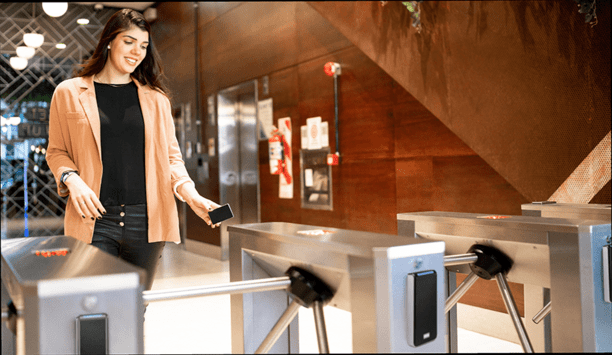
The truth behind 9 mobile access myths
Download
Access control system planning phase 2
Download










